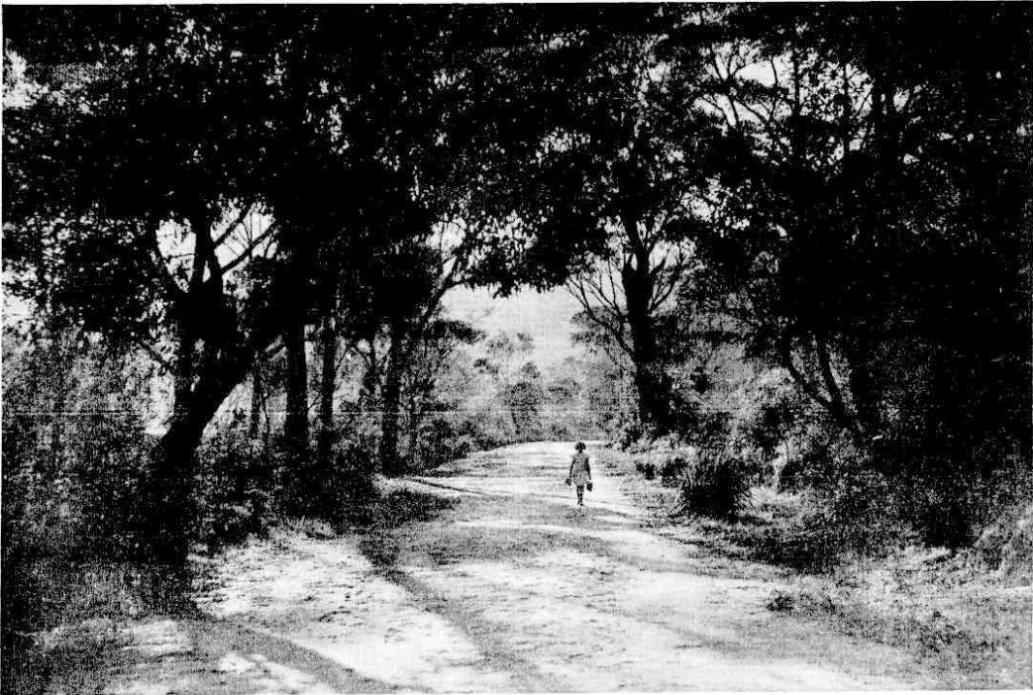August 25 - September 1, 2018: Issue 373
Historic Photographers Of Pittwater: Harold 'Caz' Cazneaux 1878 - 1953
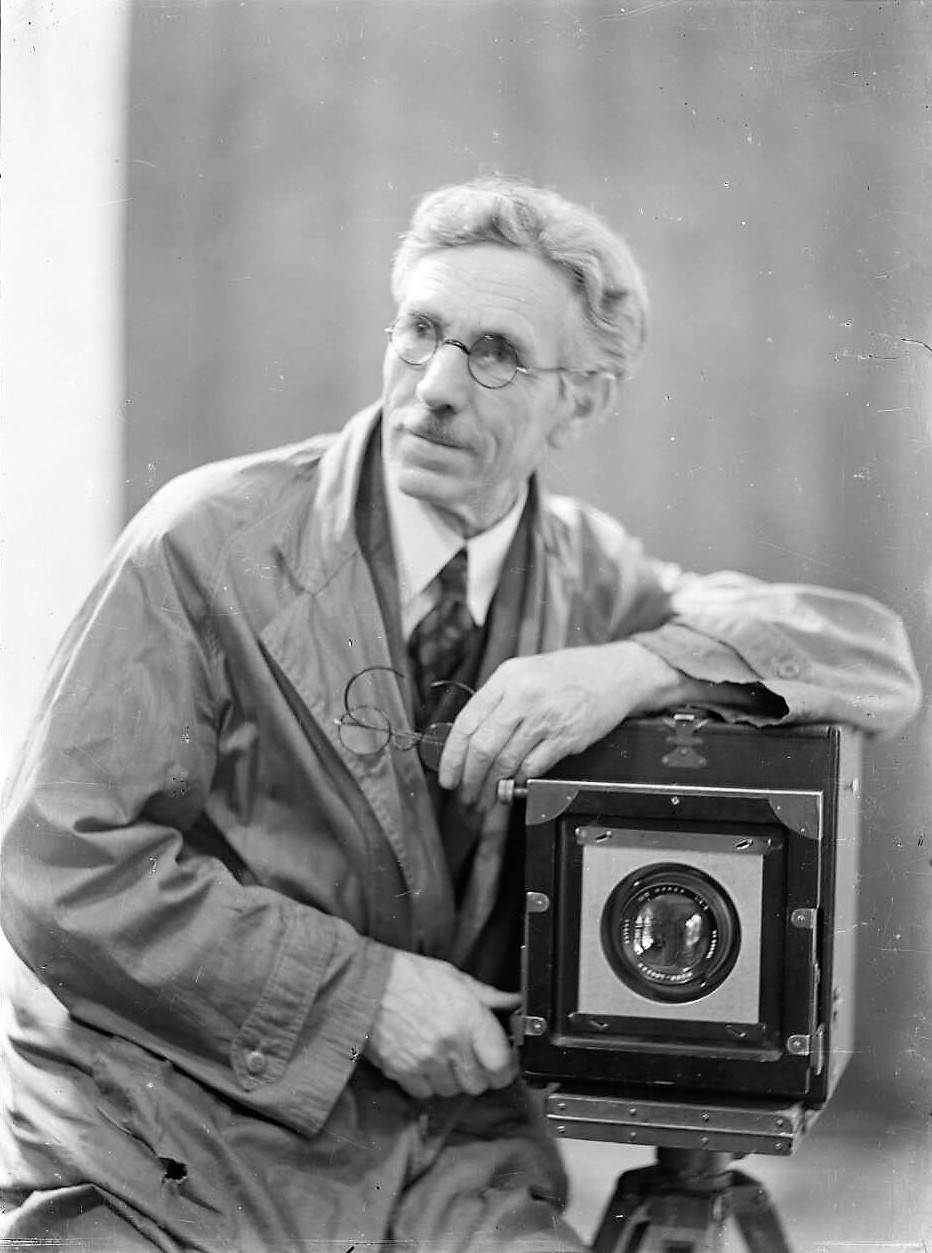
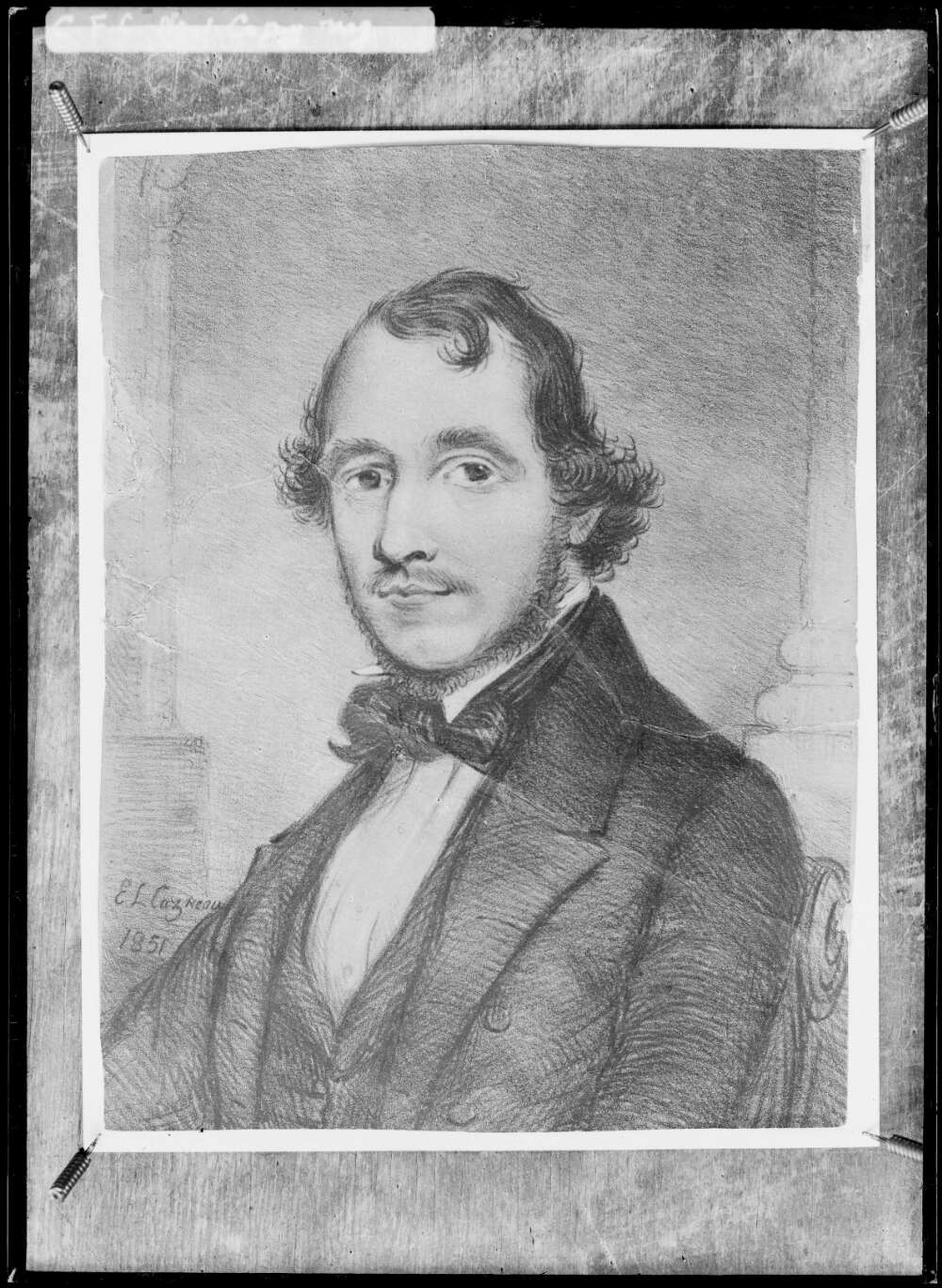
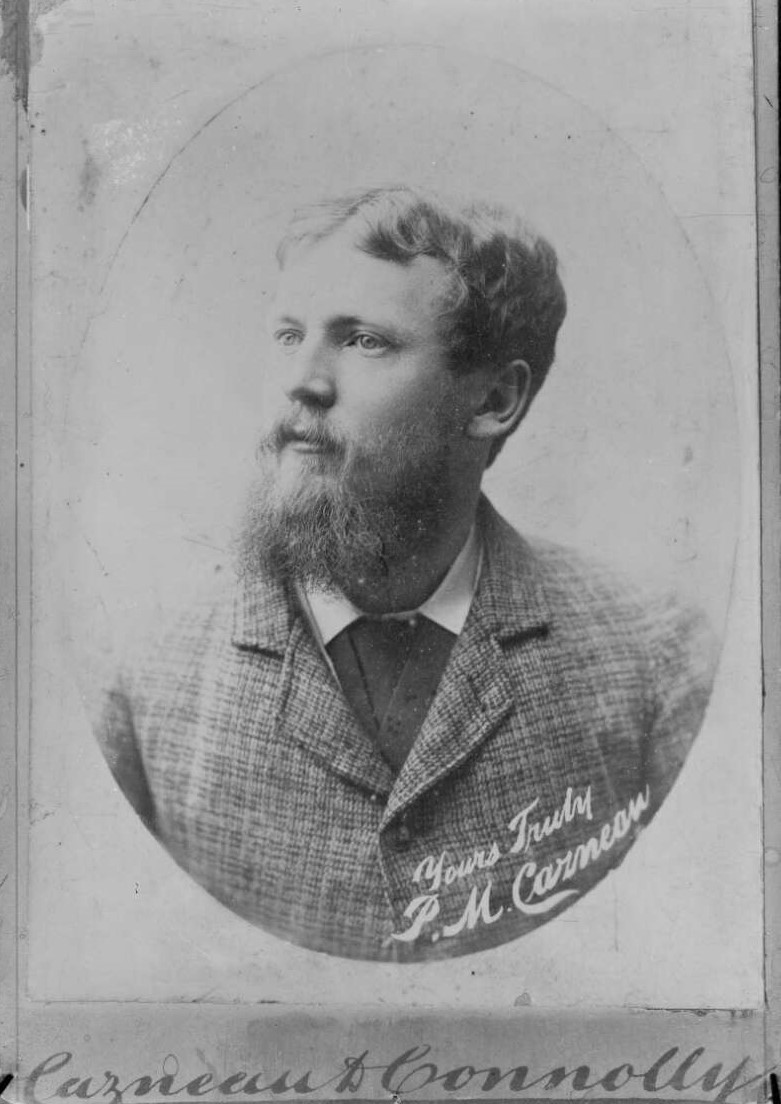
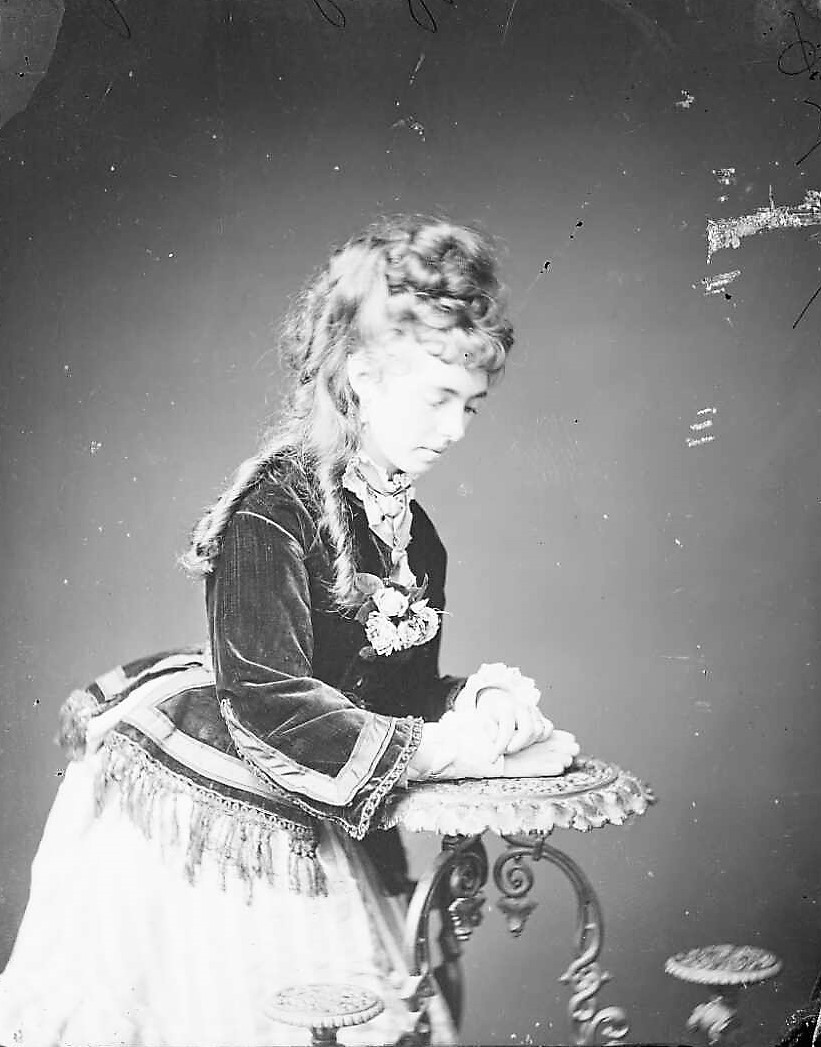
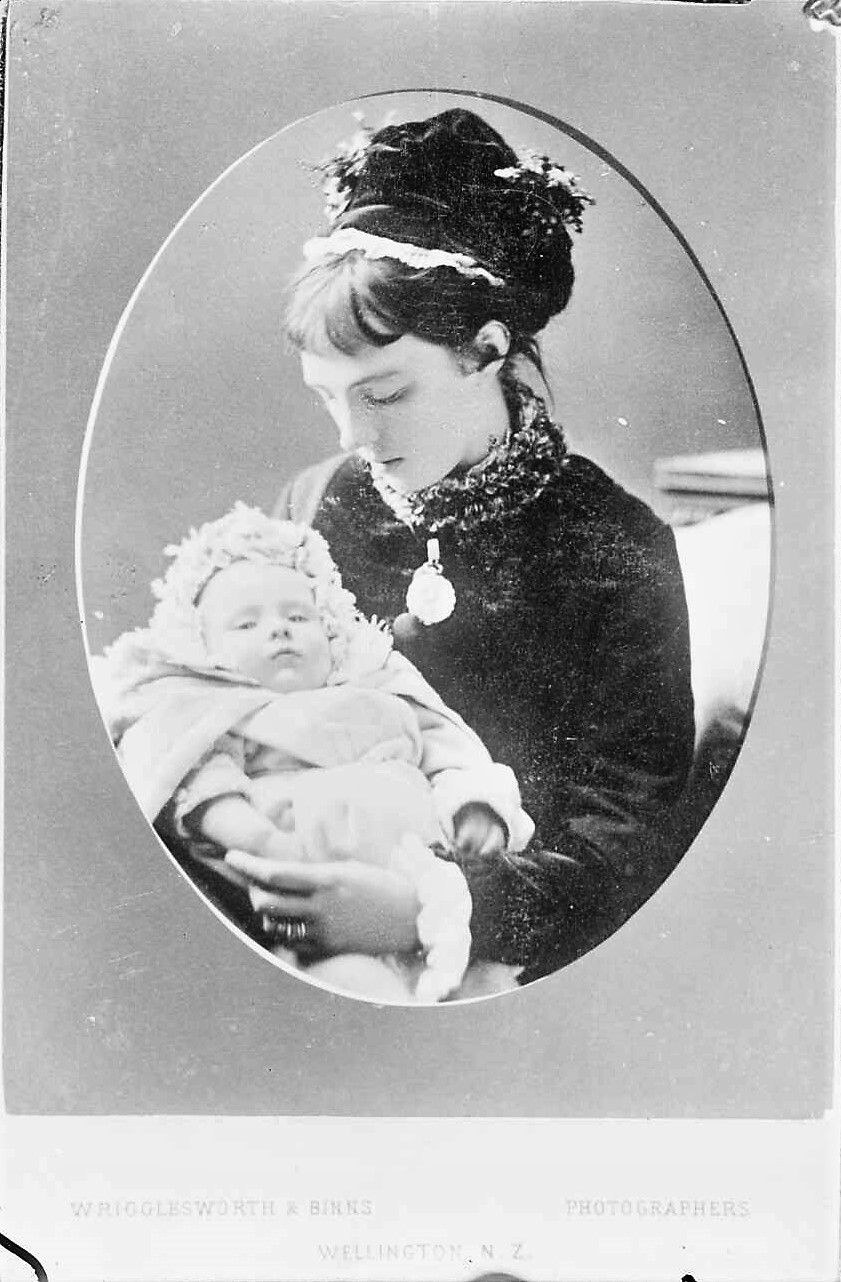
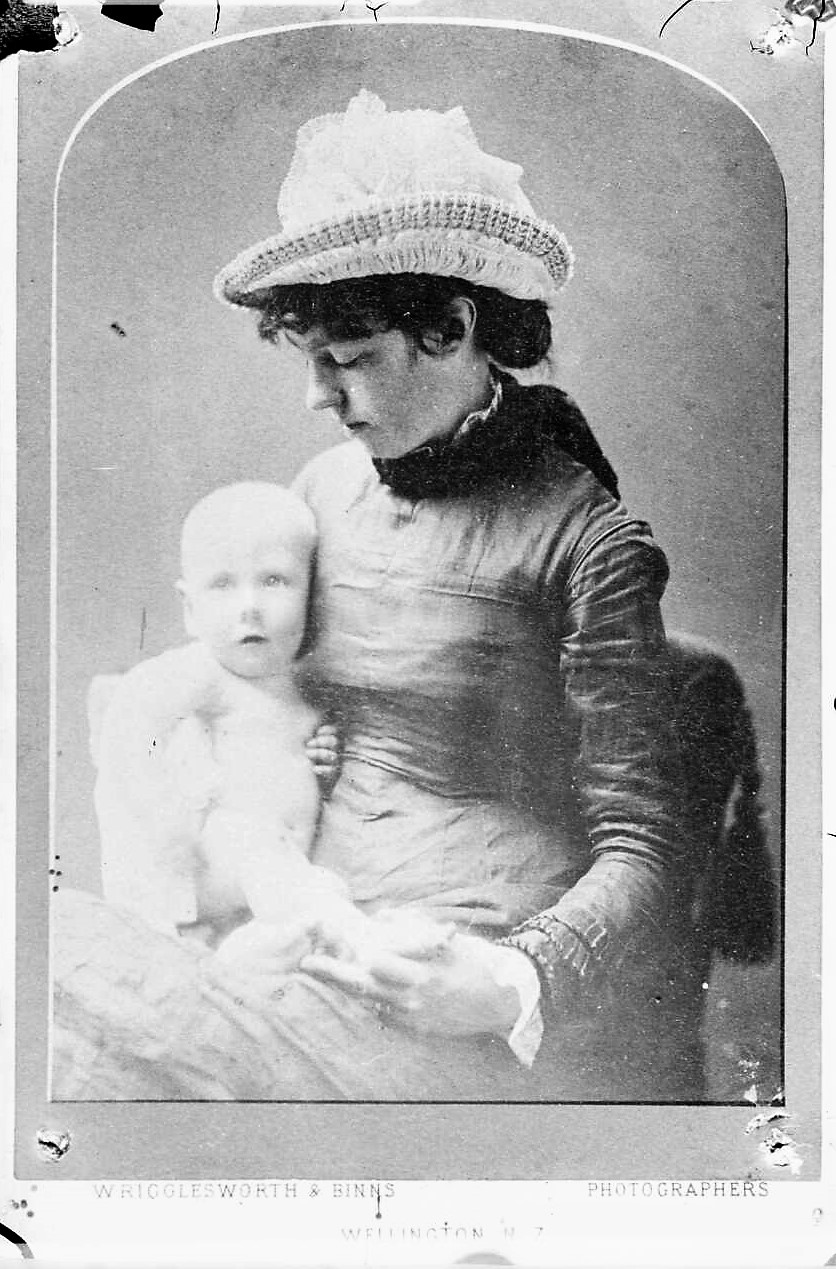
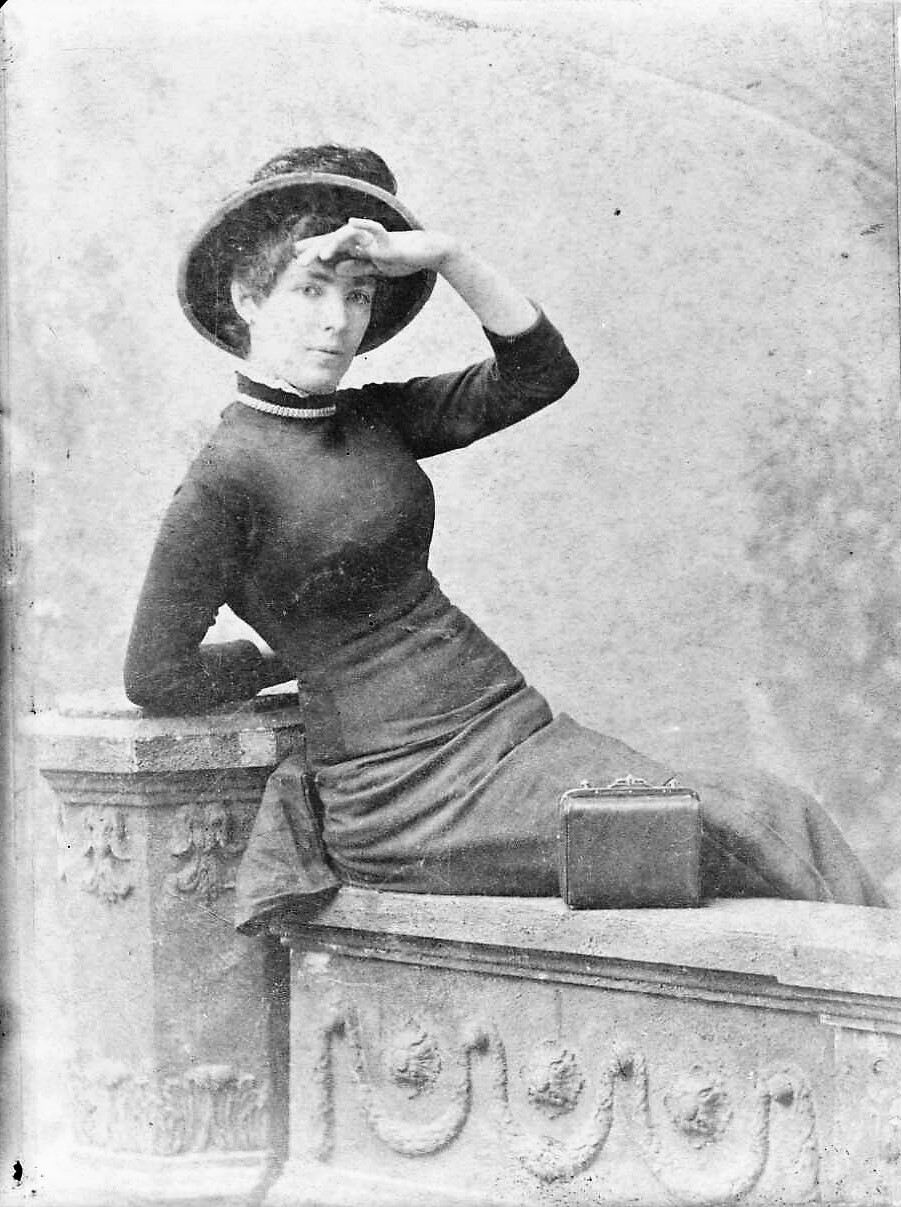
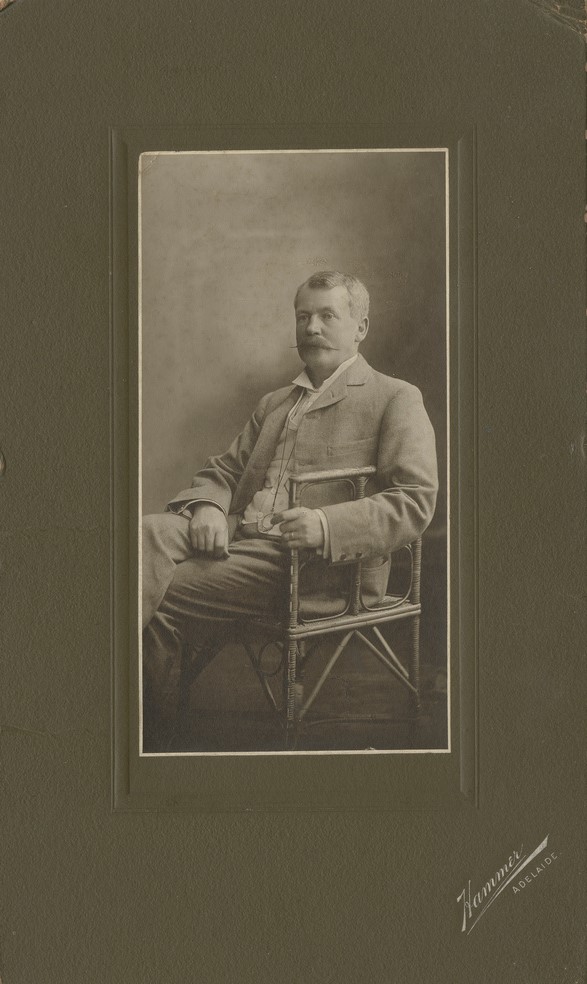
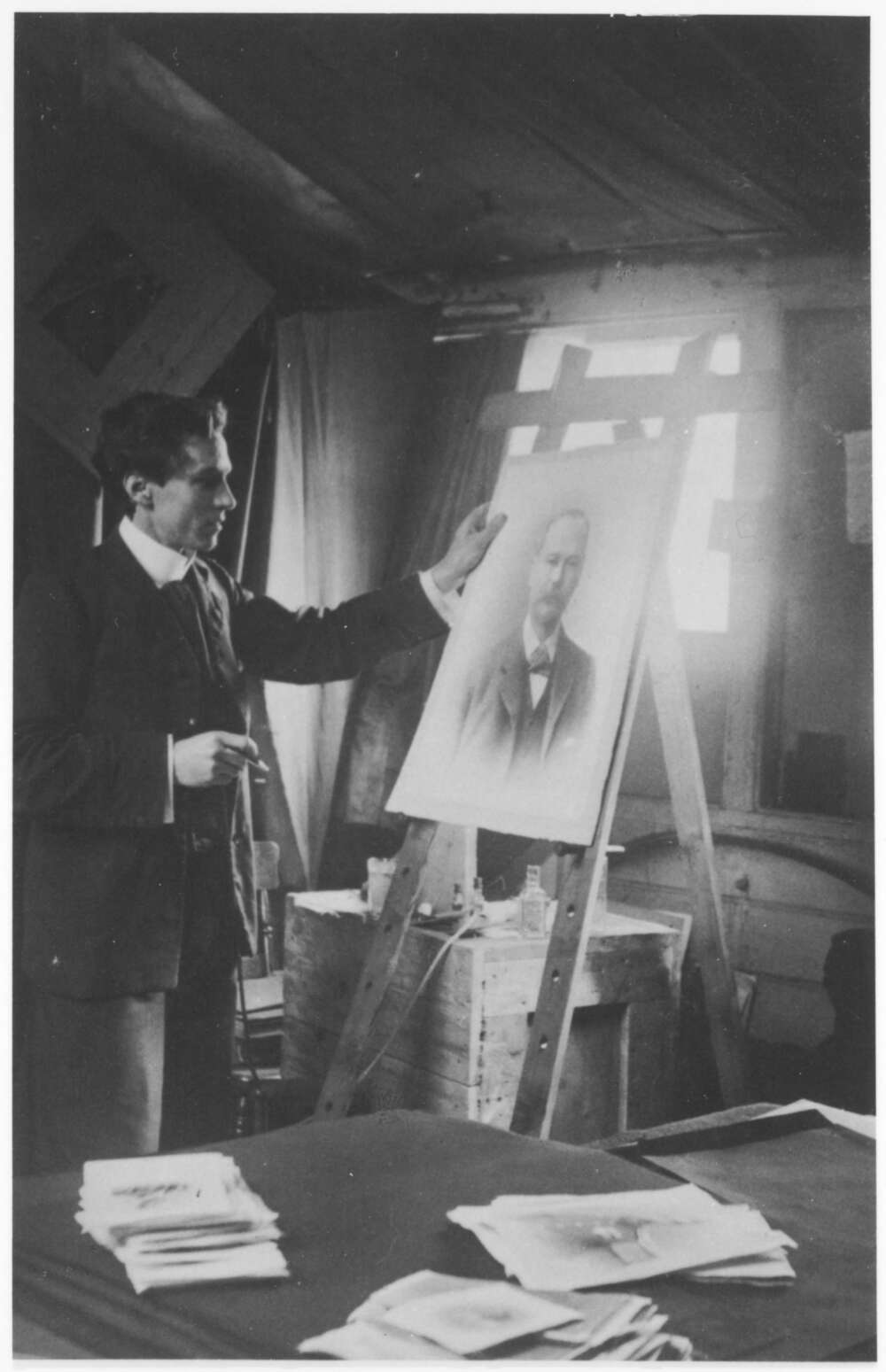
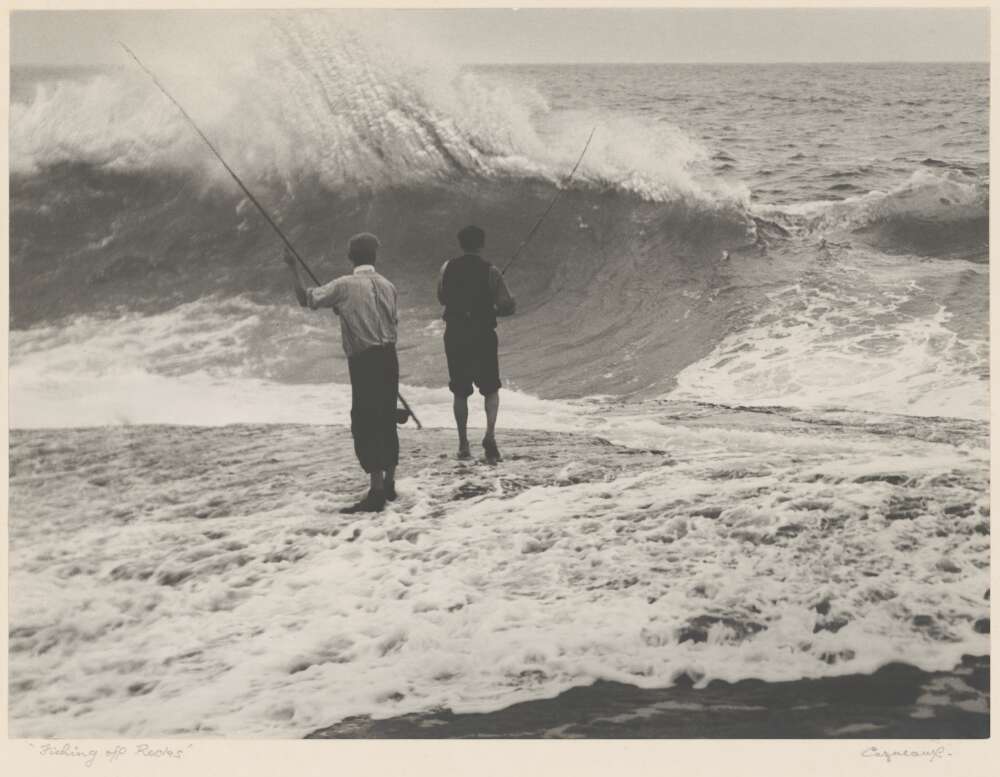
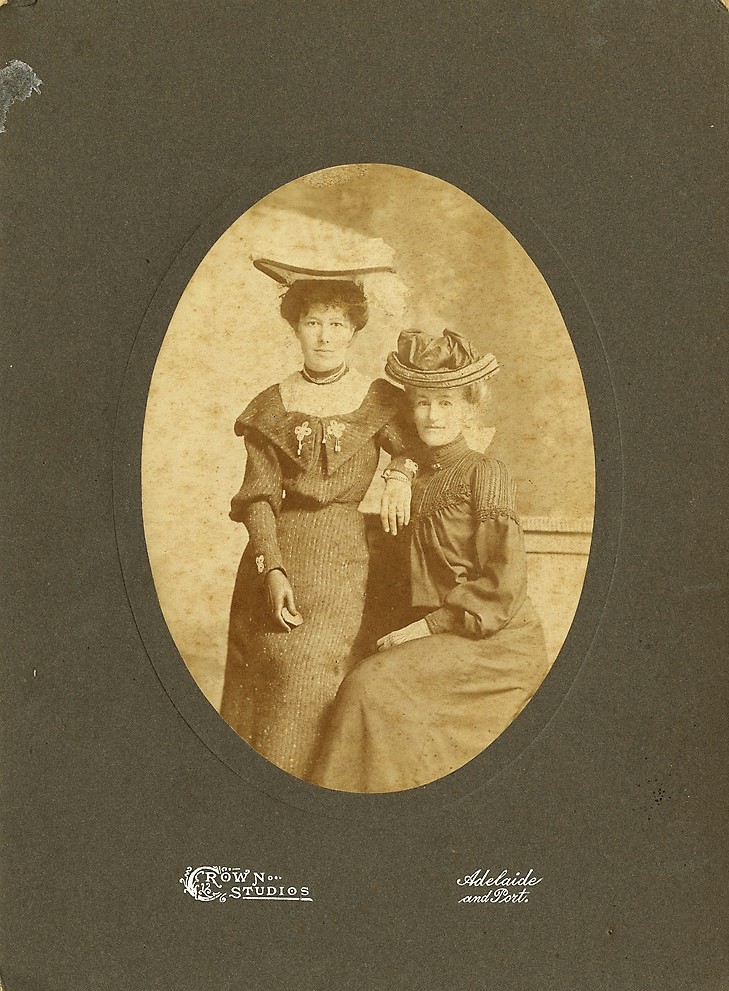
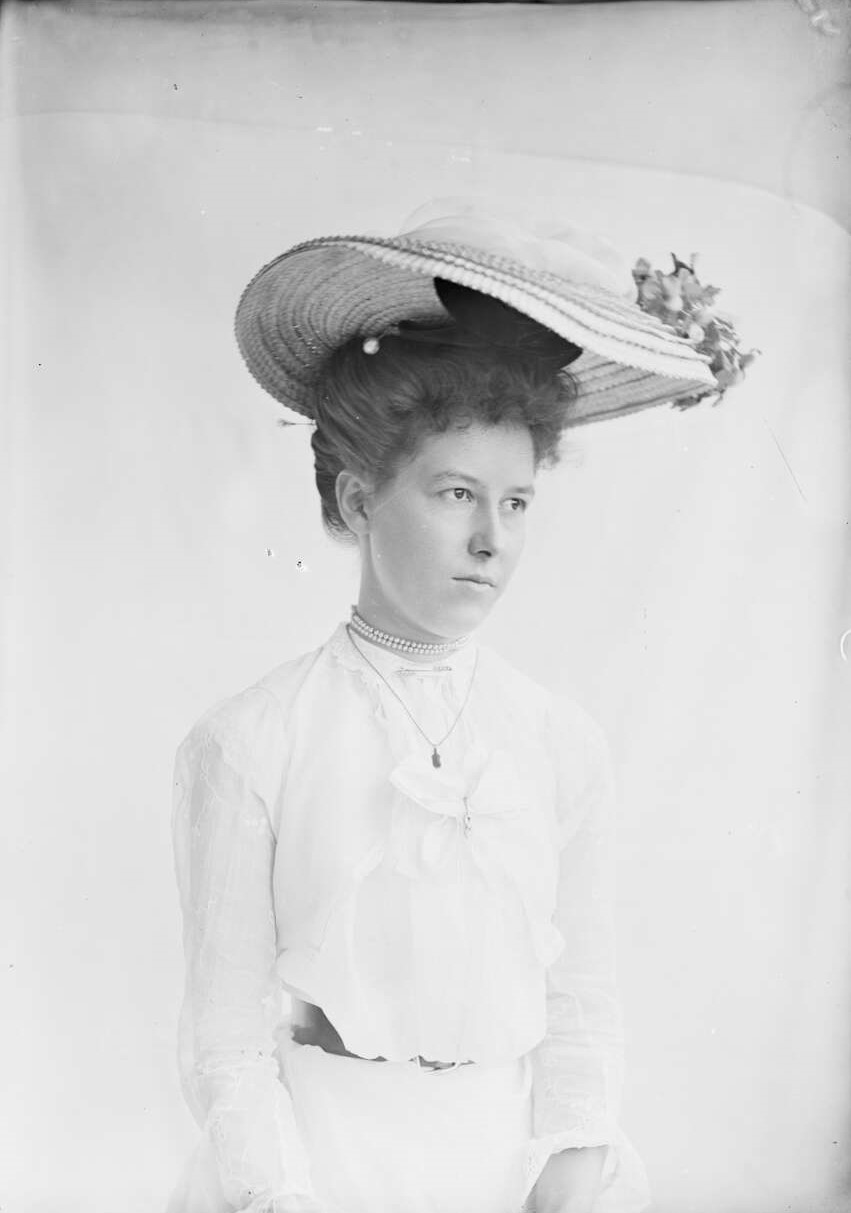
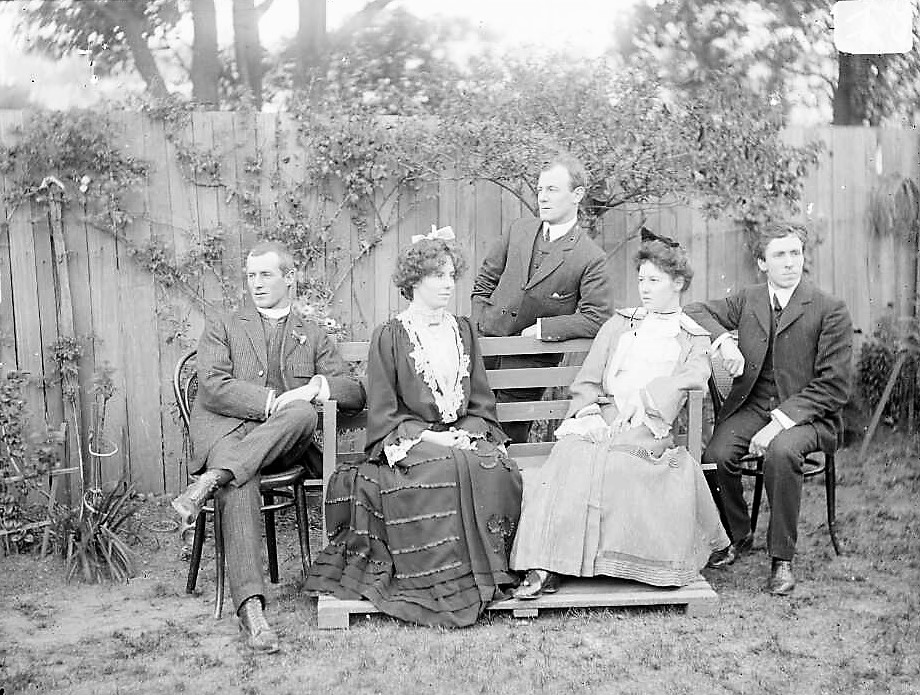
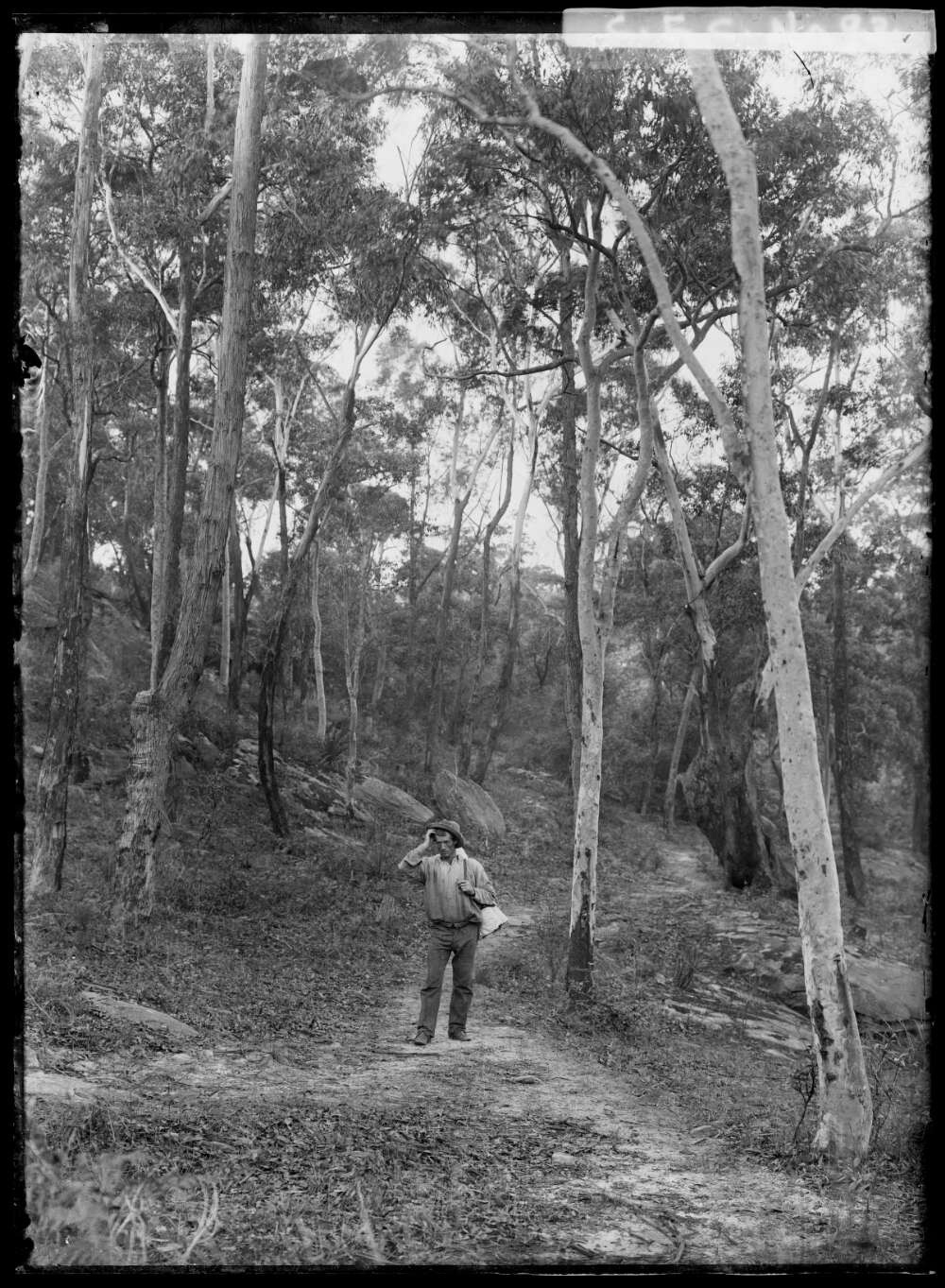
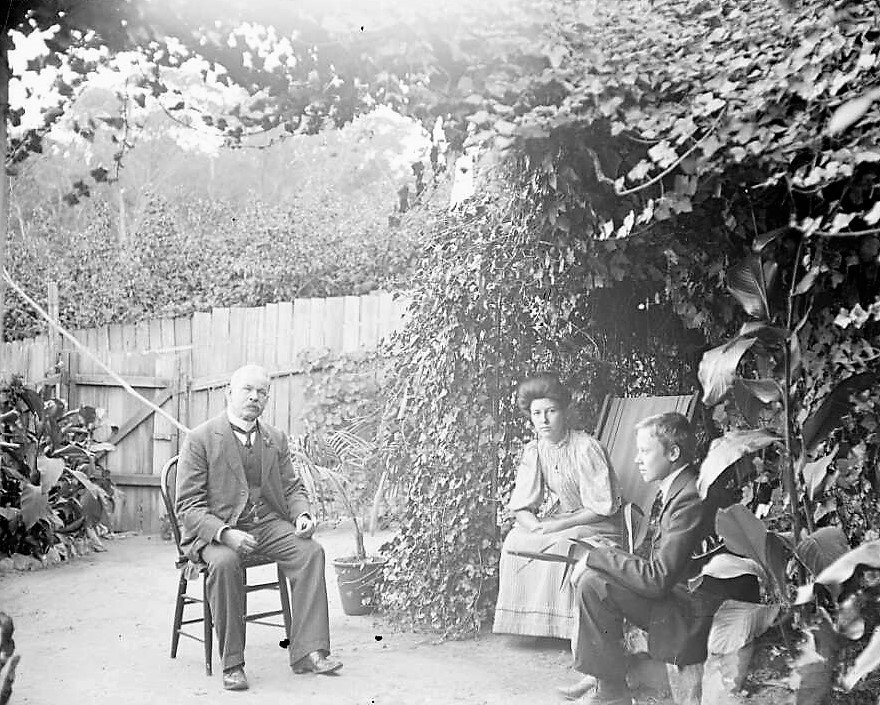
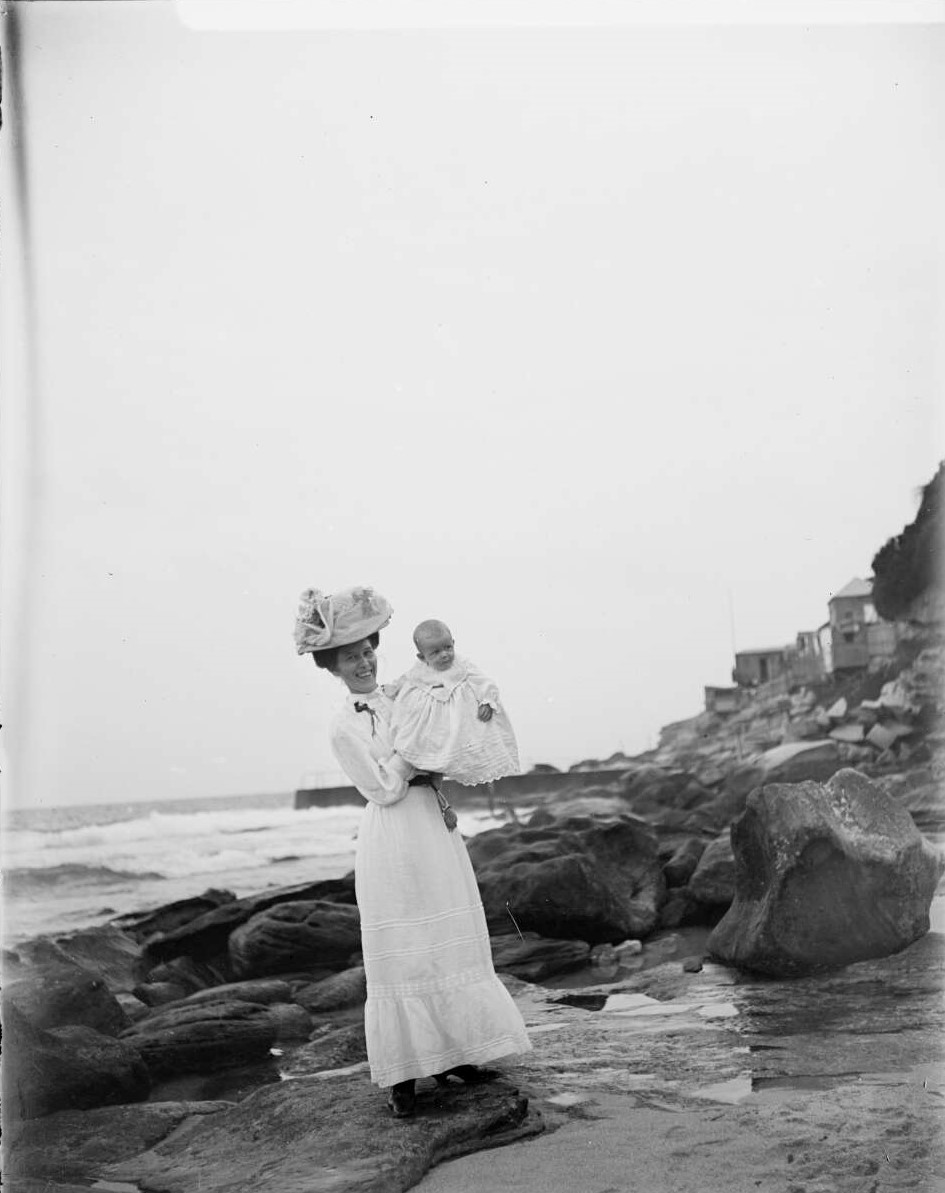
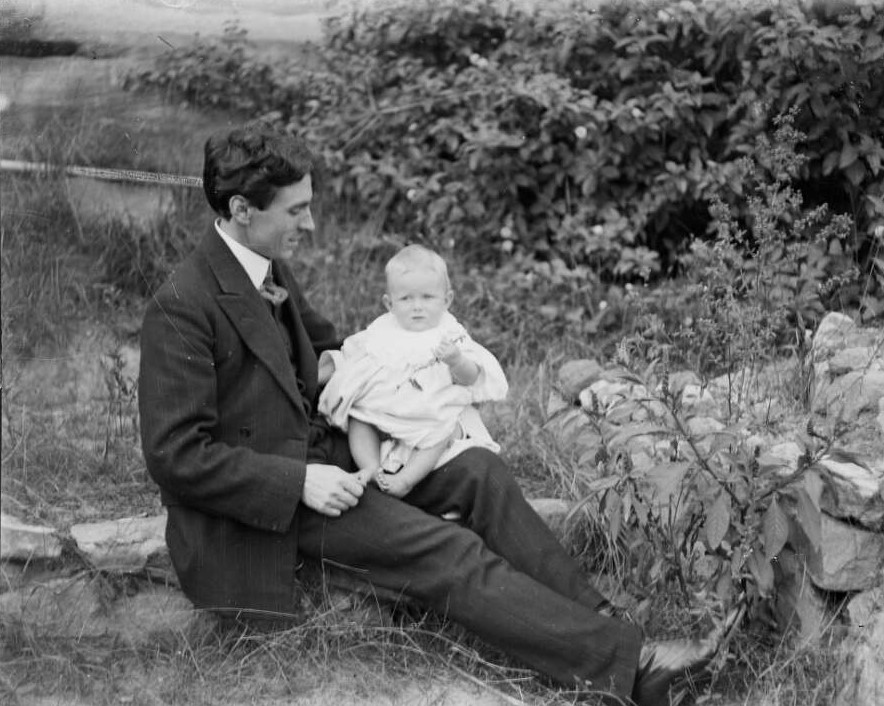
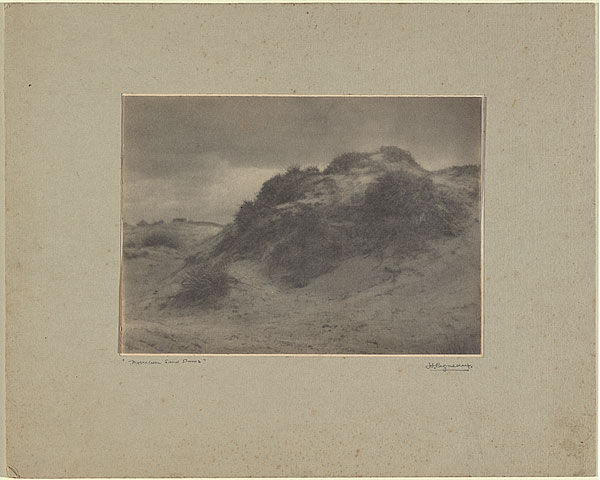
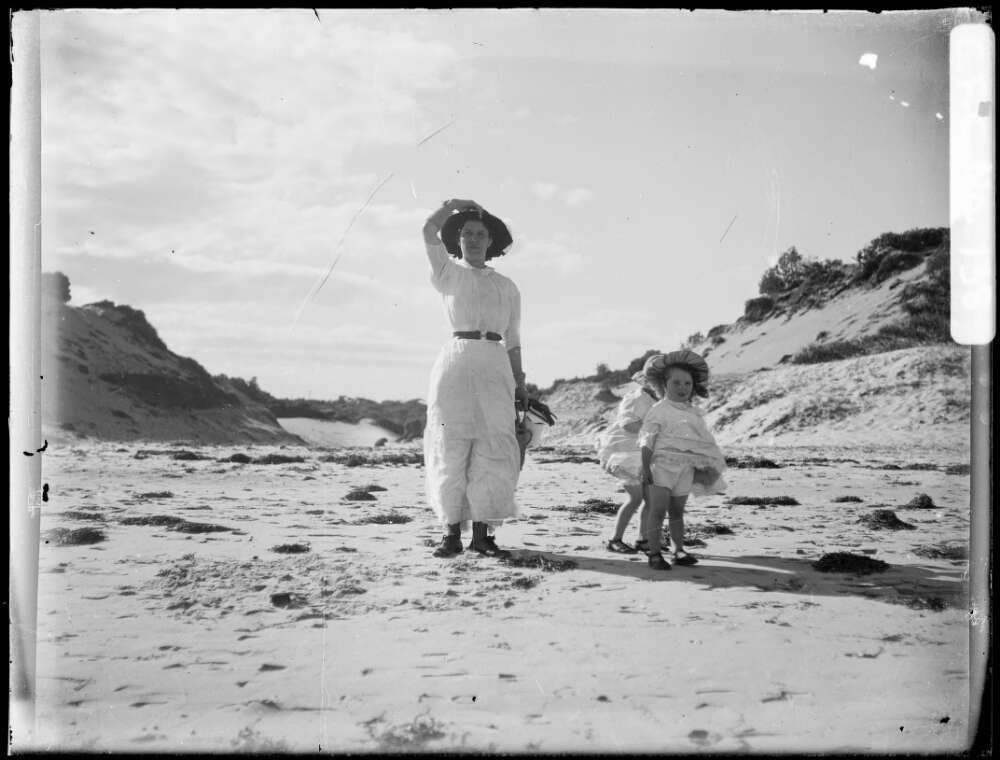
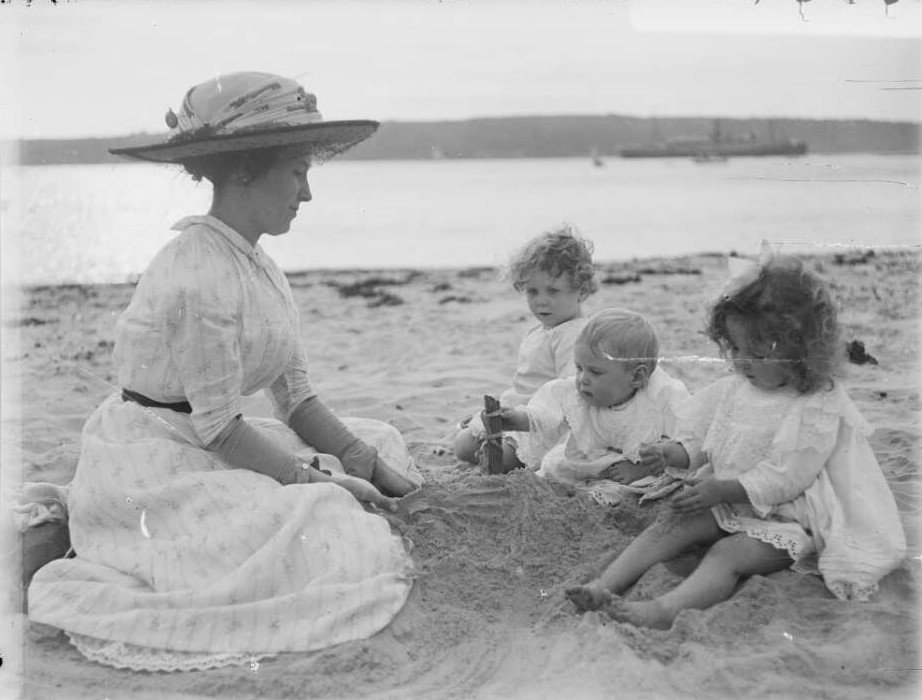
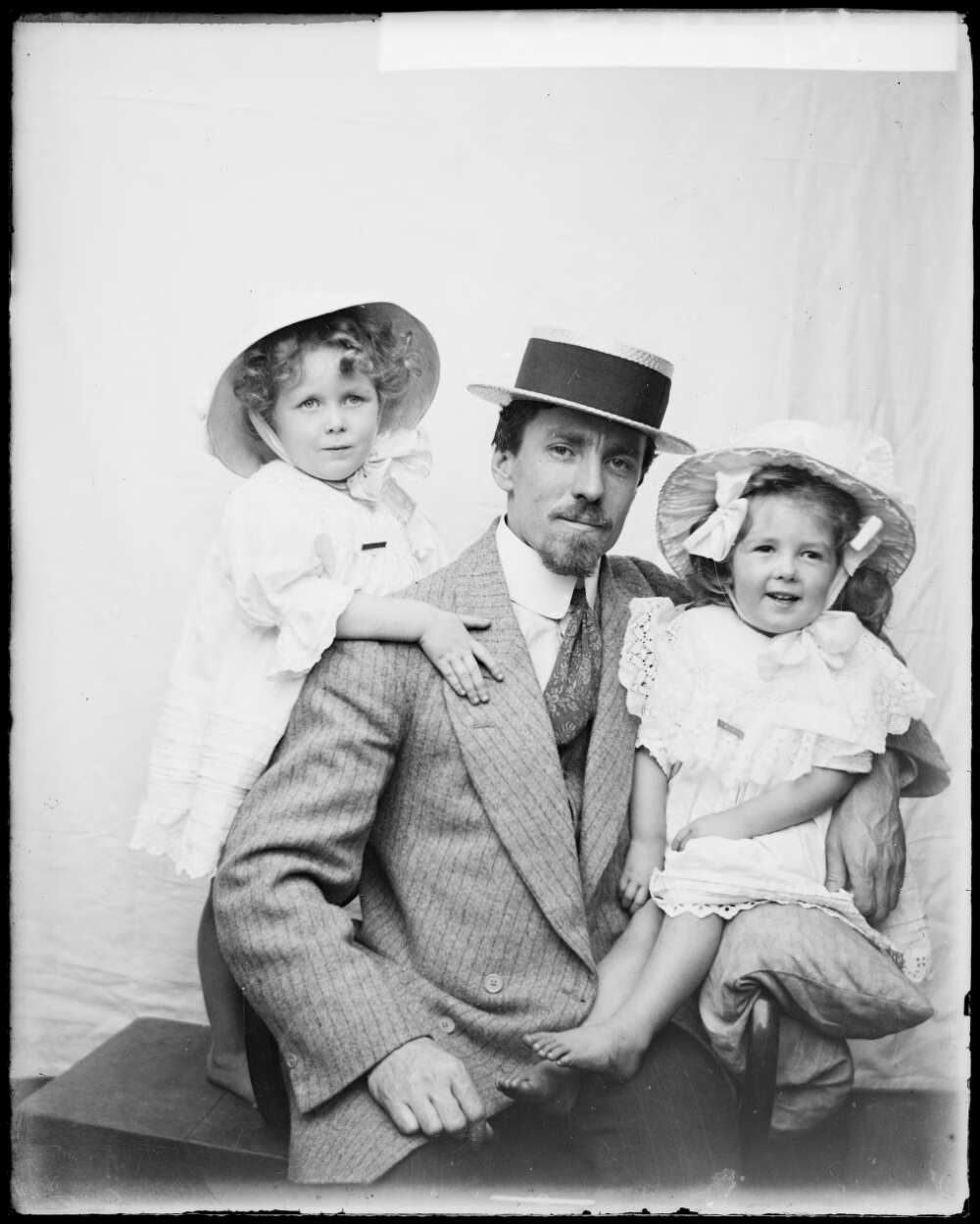
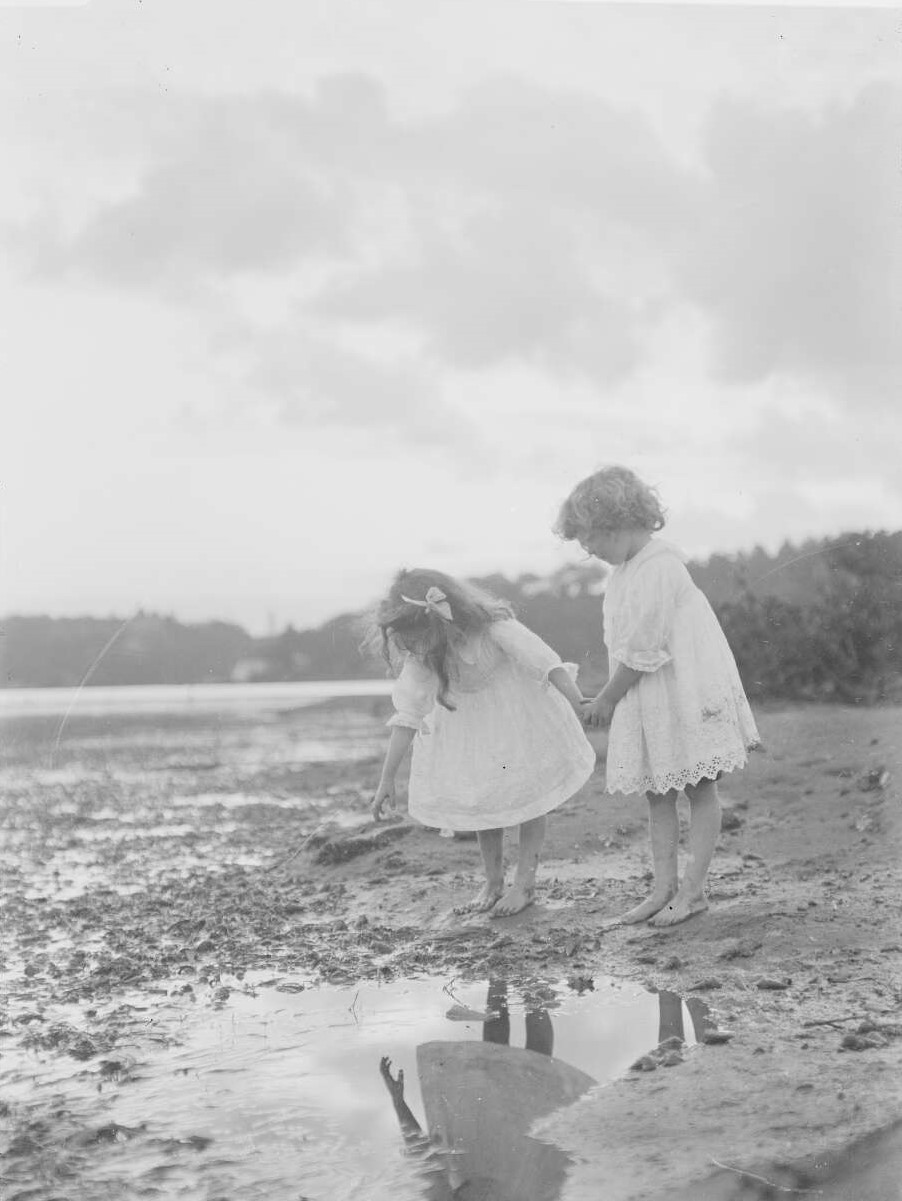
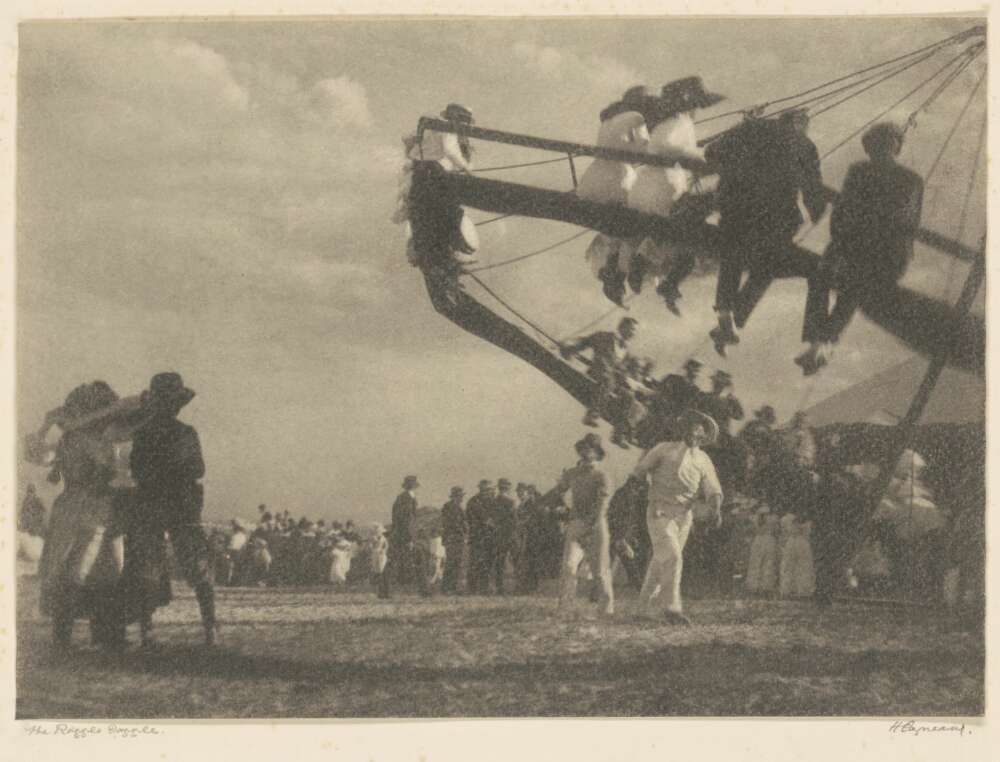
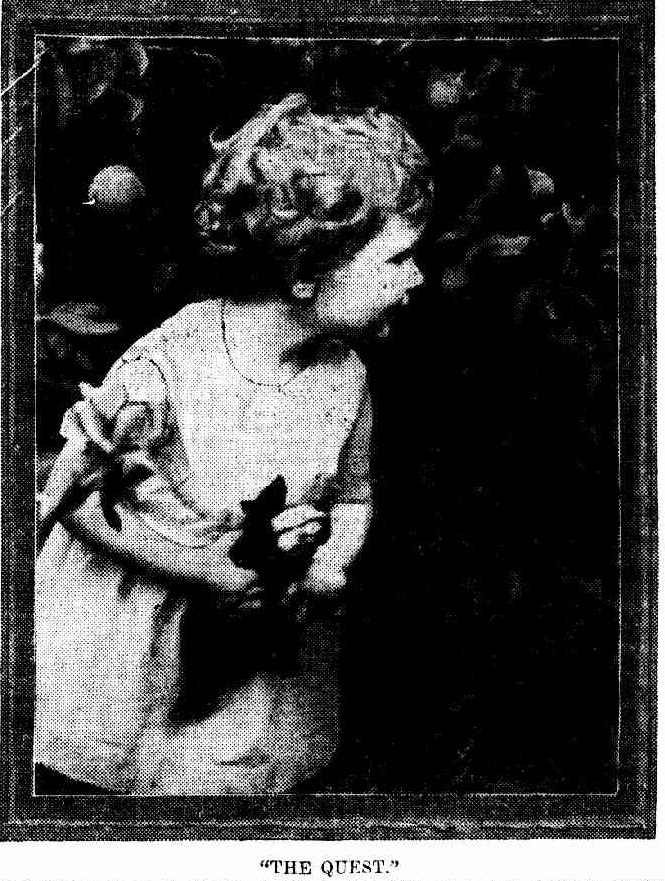
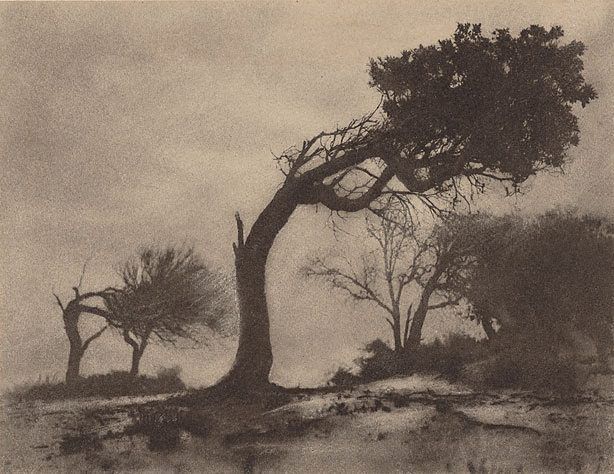
The bent tree, Narrabeen, (1914) by Harold Cazneaux
The bromoil process is used in The bent tree, Narrabeen to enhance the moody and stormy atmosphere of the scene. A bromoil print is created through an intervention in the printing process when a gelatin silver photograph is bleached and fixed, then soaked in water. A greasy ink is then applied and gradually built up to the required density.
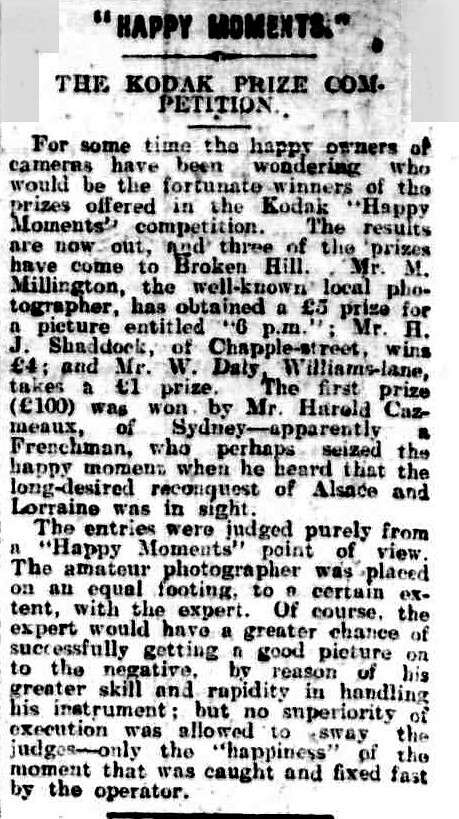
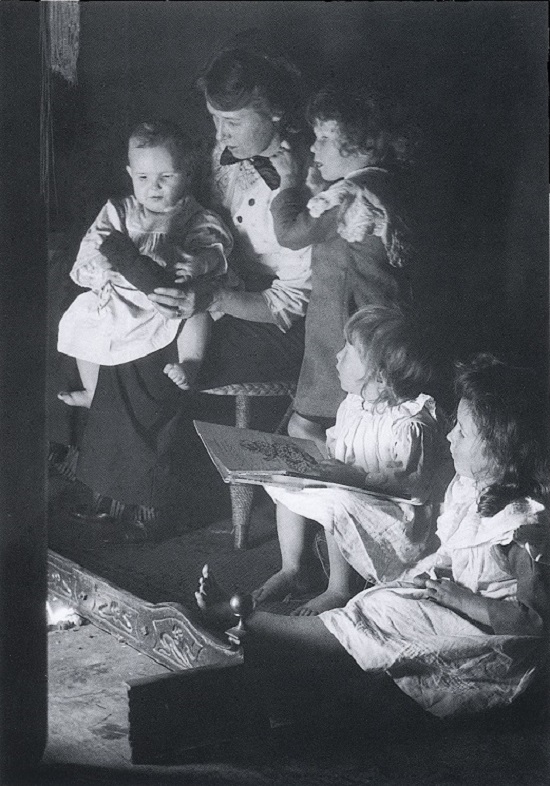
The house had been named after a village in South Australia by its original owner, Gayfield Shaw. He was Cazneaux's friend, an artist-etcher who built Ambleside for himself in about 1912. Harold, his wife Winnie, and their daughters Rainbow, Jean, Beryl and Carmen, moved into their new home in May 1915. Two more children would be born at Ambleside – Joan in 1916, and Harold Ramsay in 1920. [1.]
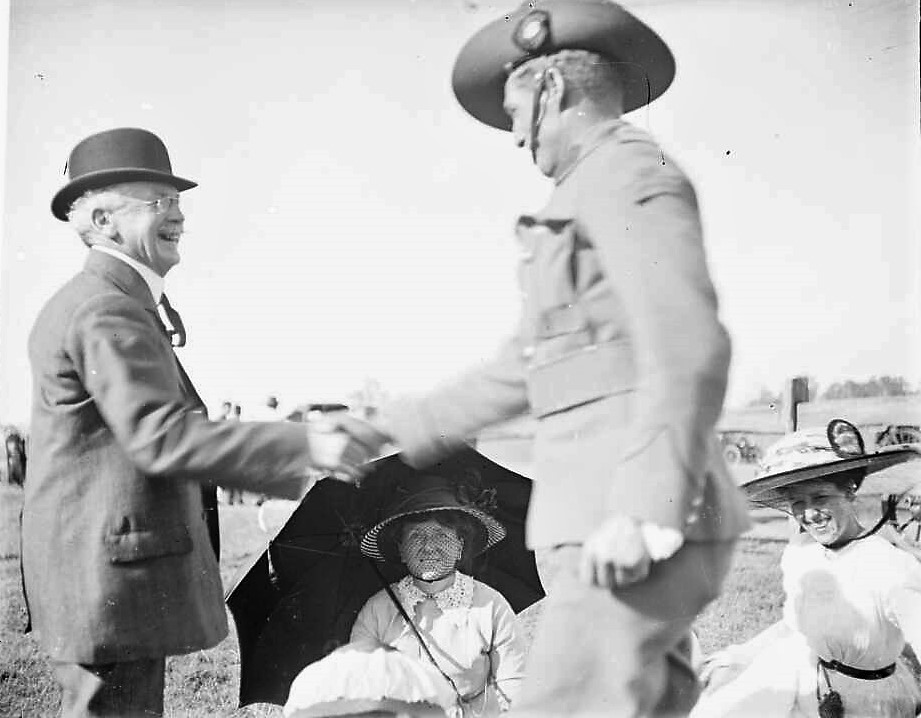
Cazneaux, Harold. (1915). Pierce Mott Cazneau shaking hands with his son, King, ca. 1915 Courtesy National Library of Australia. Retrieved from http://nla.gov.au/nla.obj-144141705
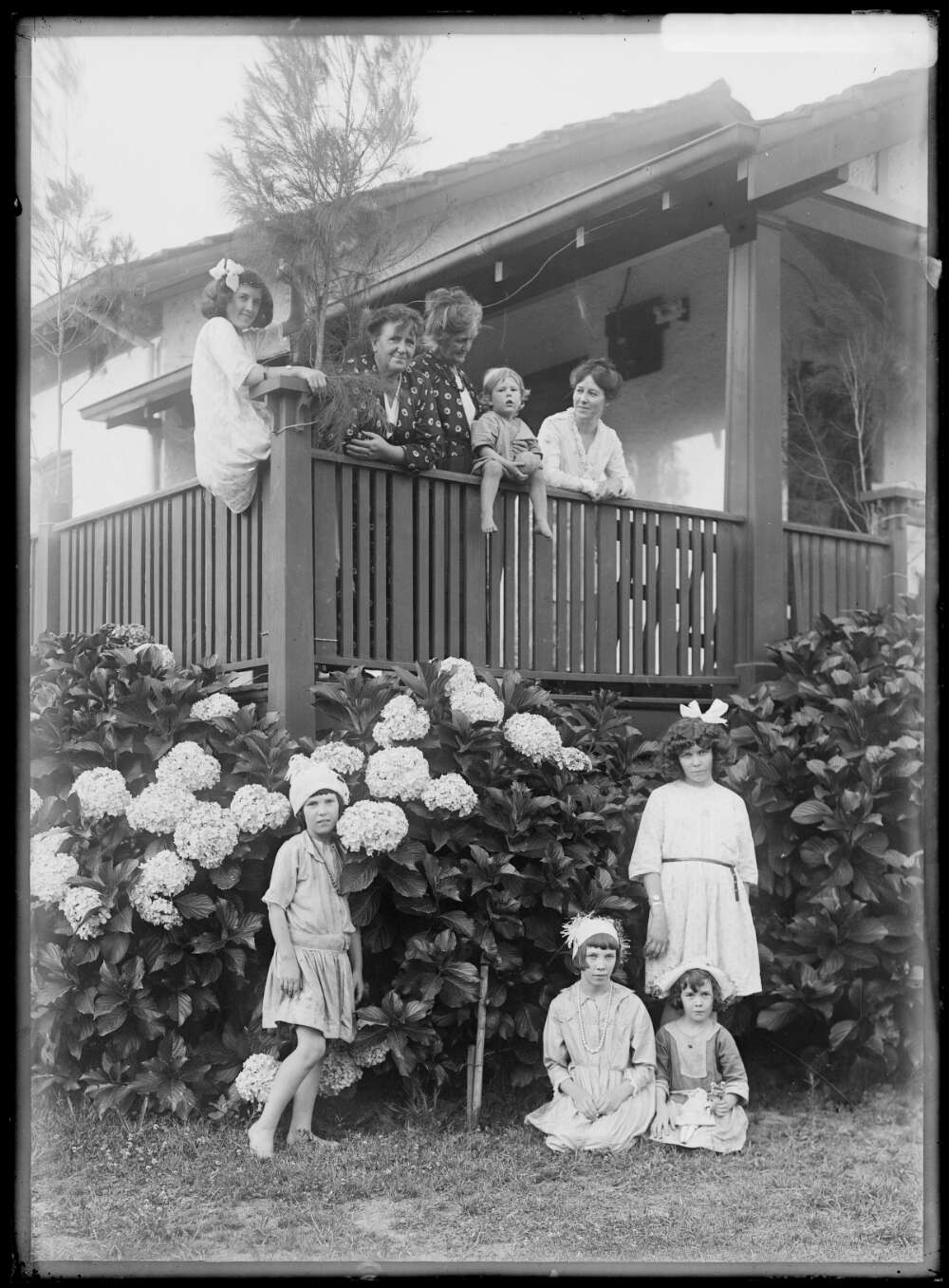
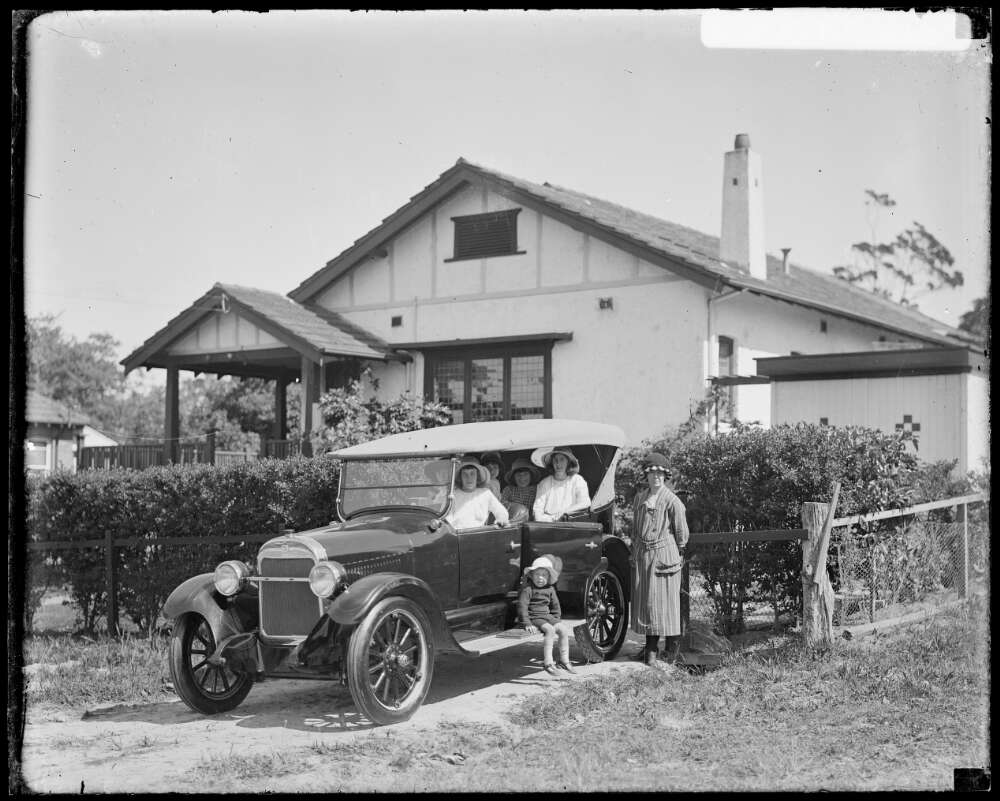
HOLIDAY SNAPSHOTS : HAPPY DAYS OF CHILDHOOD.
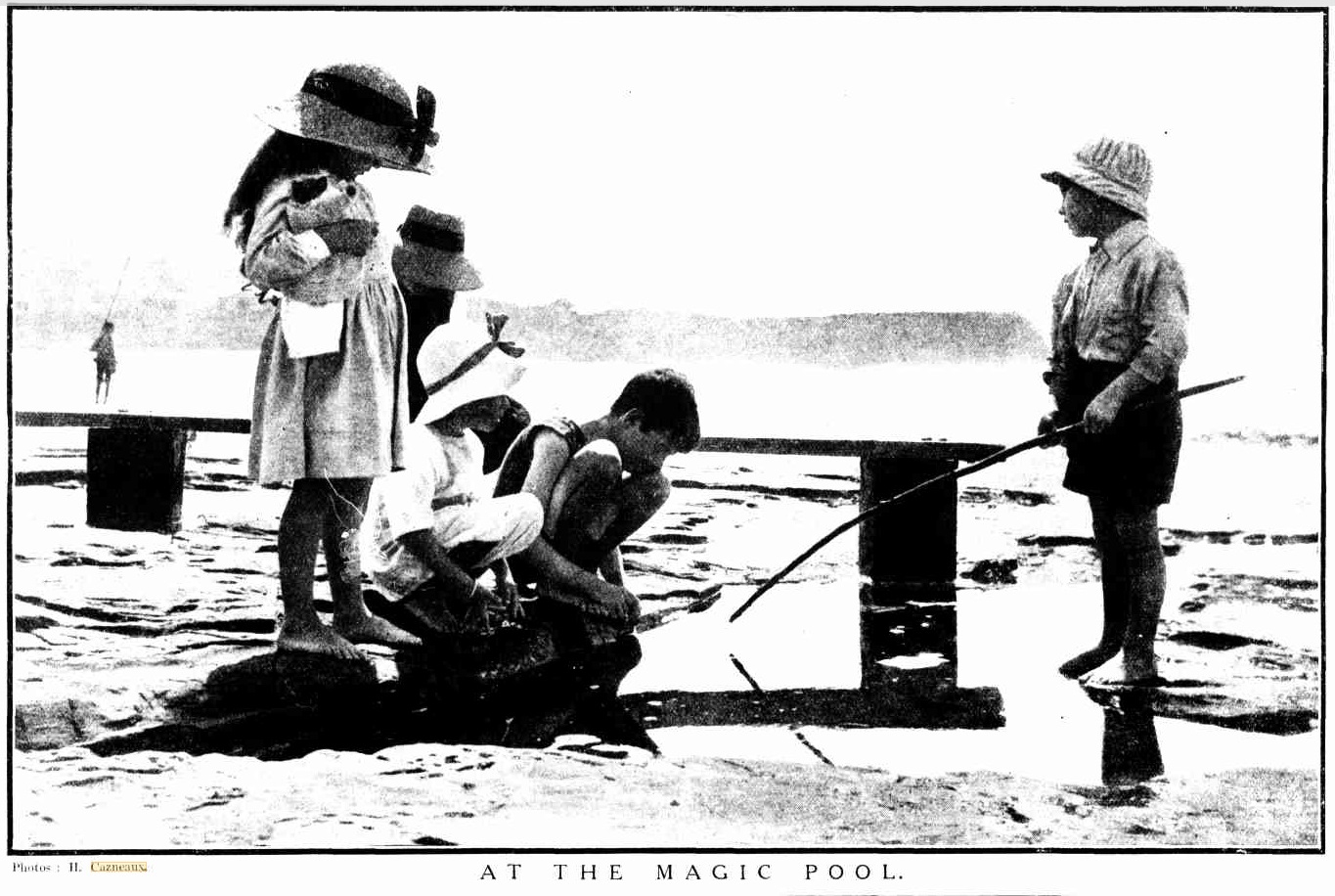
Photos: H. Cazneaux. AT THE MAGIC POOL.

.jpg?timestamp=1535089103568)
By 1920 he had his own photographic business. He was employed by Sydney Ure Smith, who gave him regular work for his new publications the Home and Art in Australia.
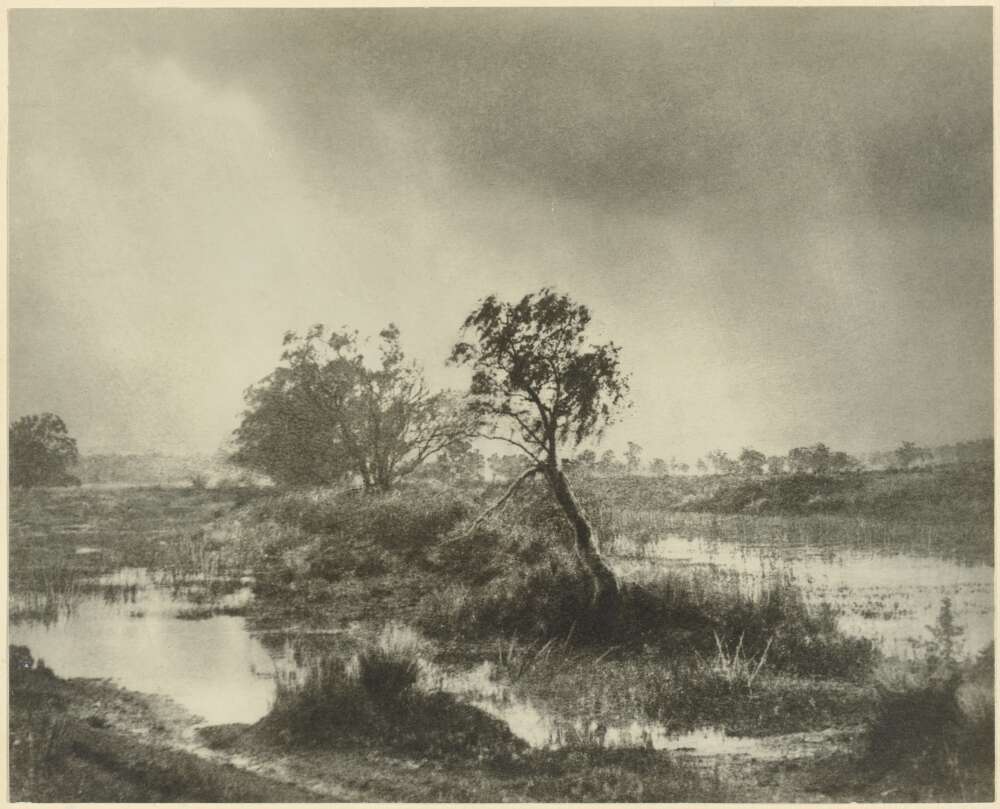
Clearing showers, Narrabeen, New South Wales by Harold Cazneaux(Harold, 1878-1953) circa. 1920. Image No.: 1987425, courtesy National Library of Australia
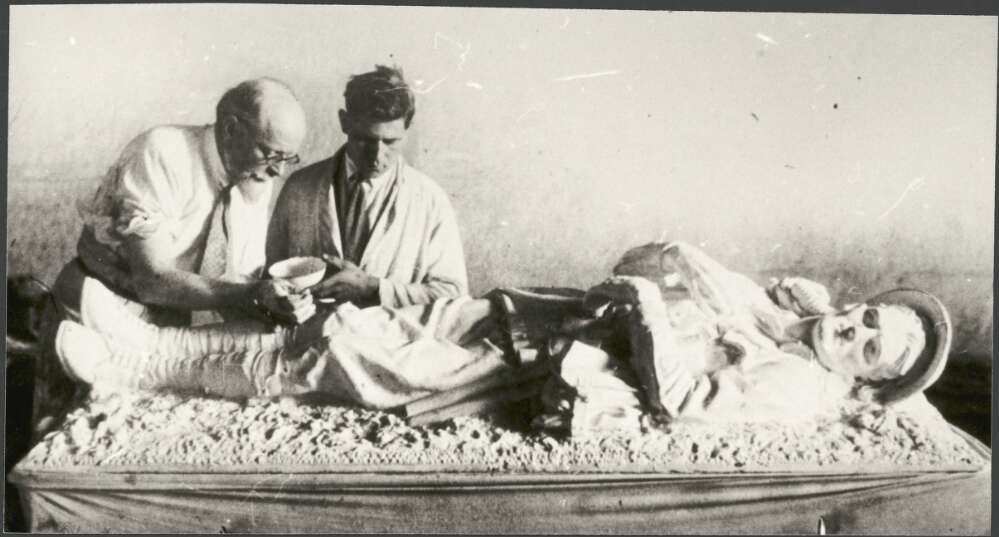
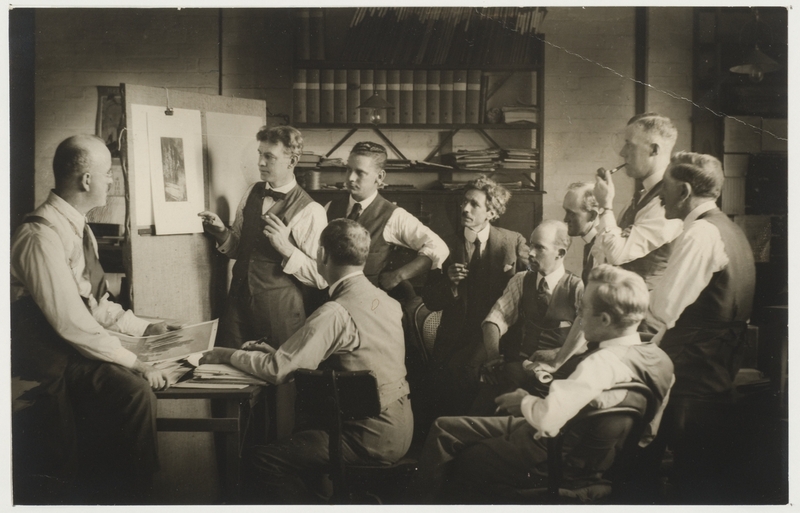
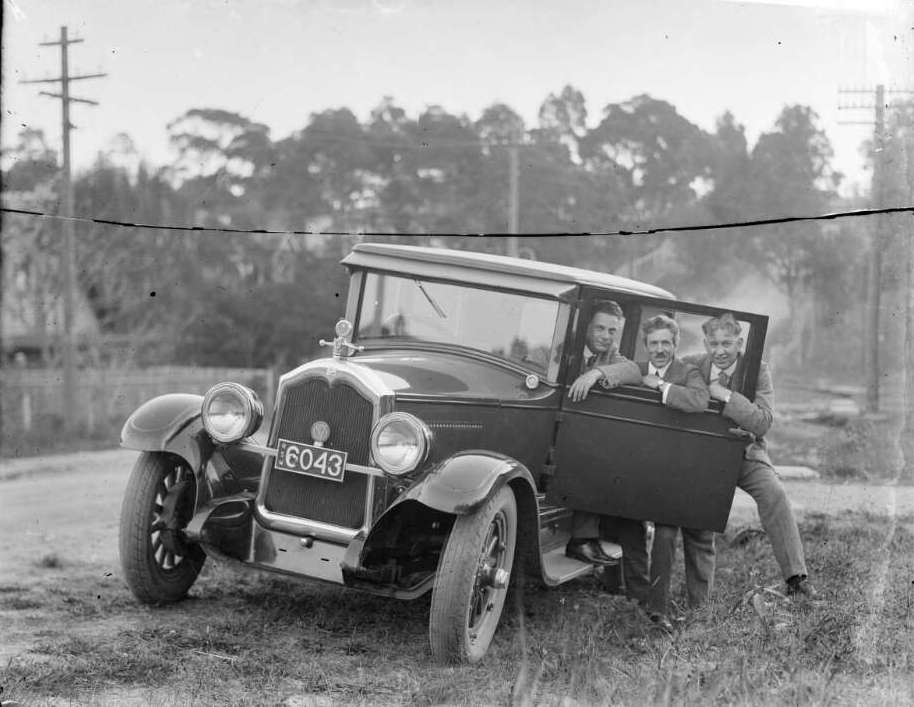
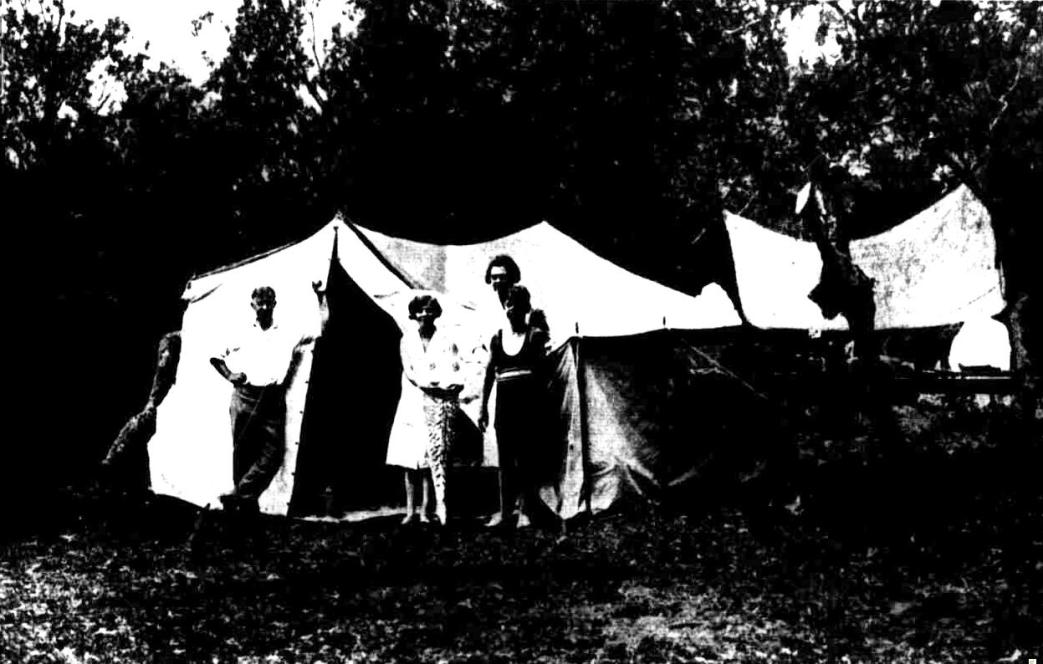
Monte Luke, le célèbre artiste photographe de Sydney, Madame Monte Luke et leur famille à Avalon Beach, près Sydney. LE "MOTOR CAMPING OUT." (1928, October 26). Le Courrier Australien (Sydney, NSW : 1892 - 2011), , p. 3. Retrieved from http://nla.gov.au/nla.news-article161724364
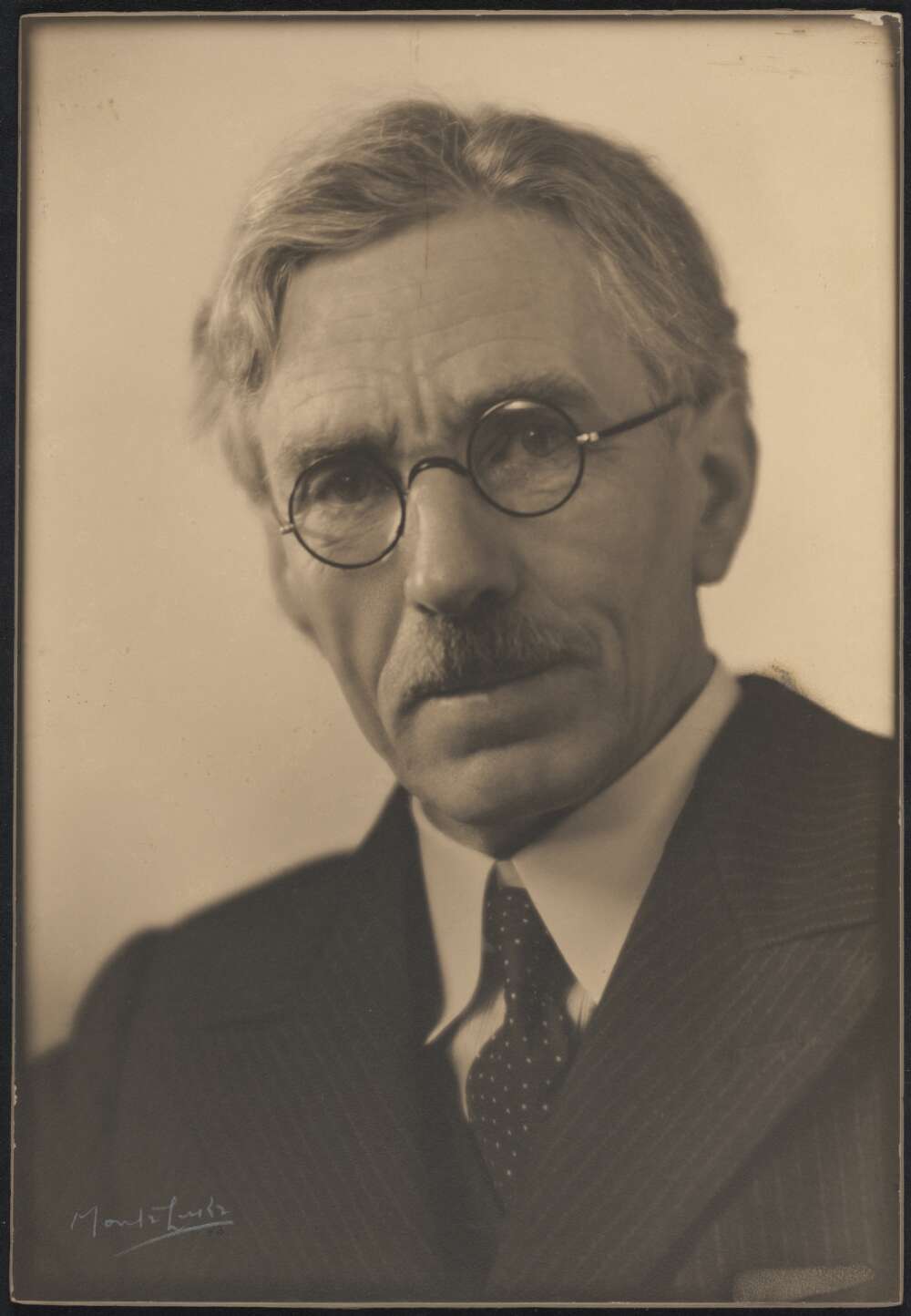
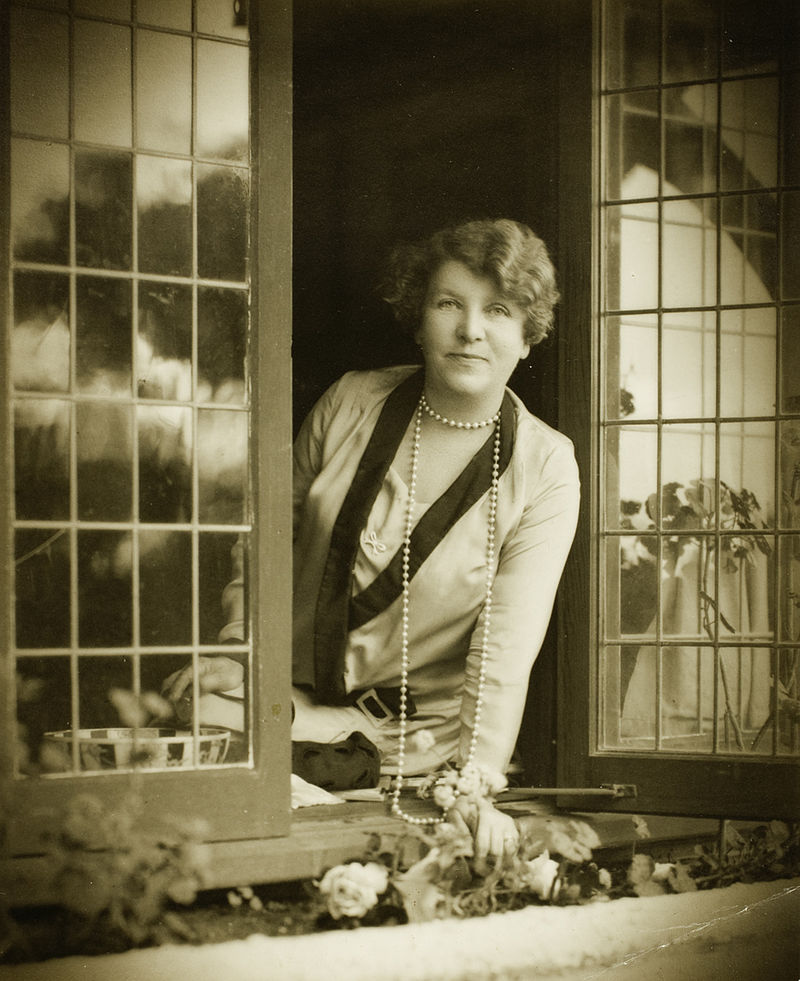
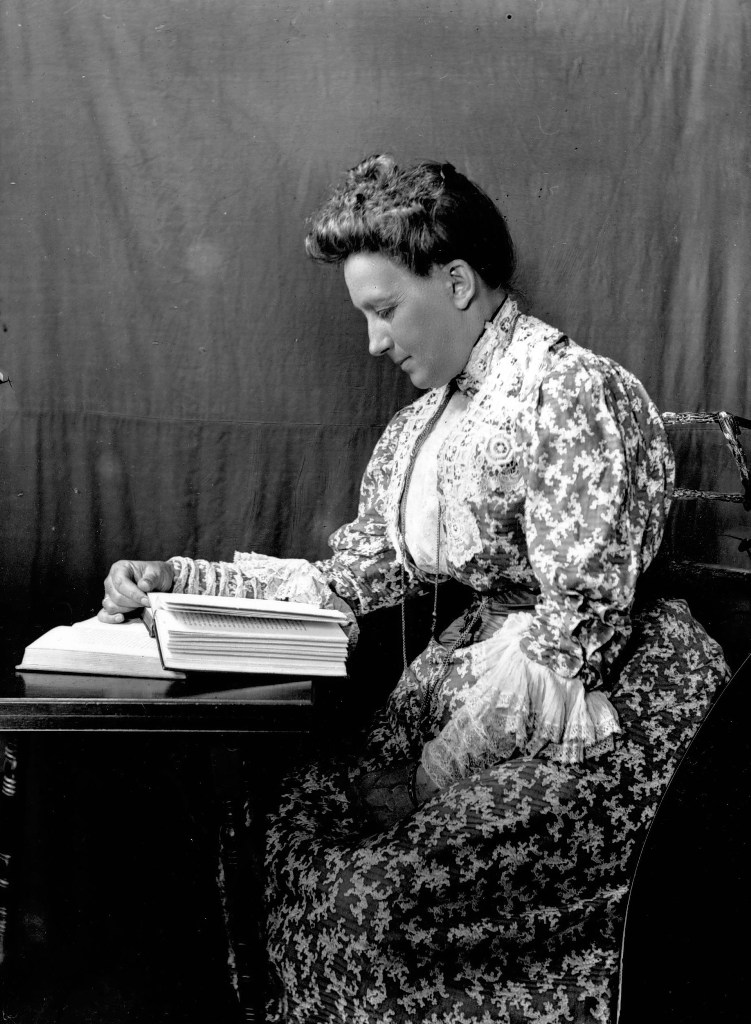
Harold Cazneaux was able to turn his hand to capturing anything - landscapes, people, gardens, scenes that evoke mood, season and
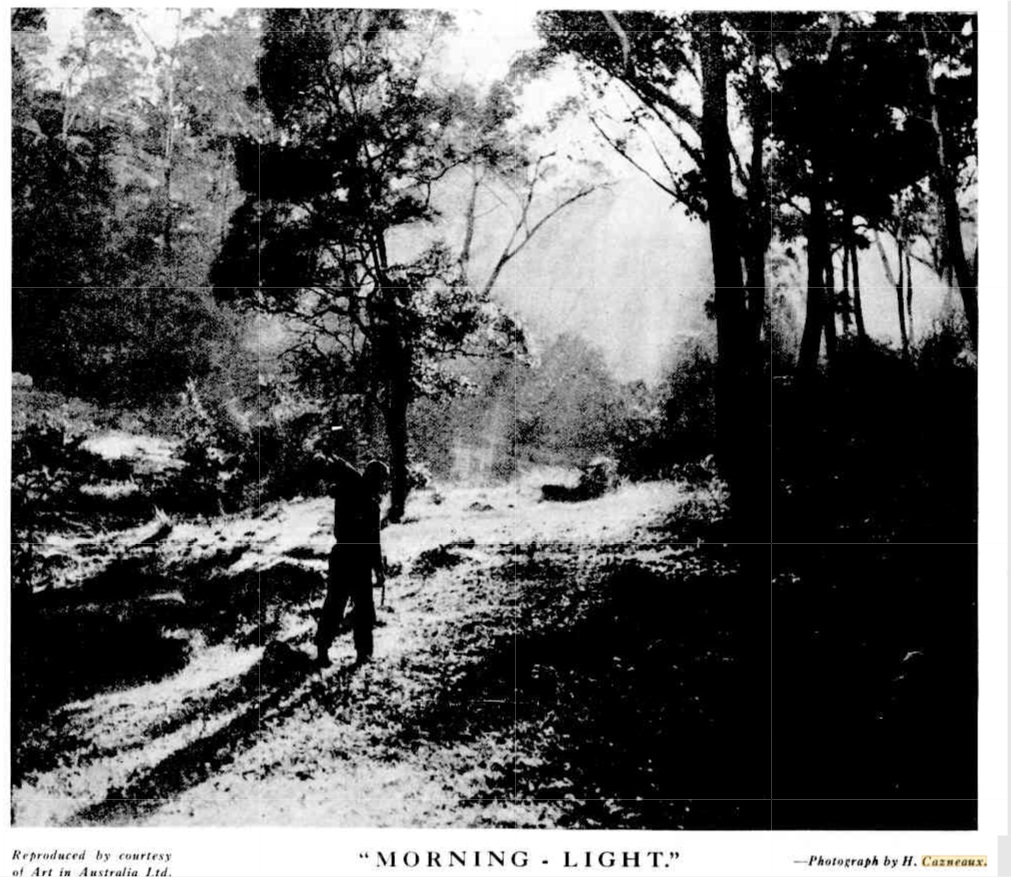
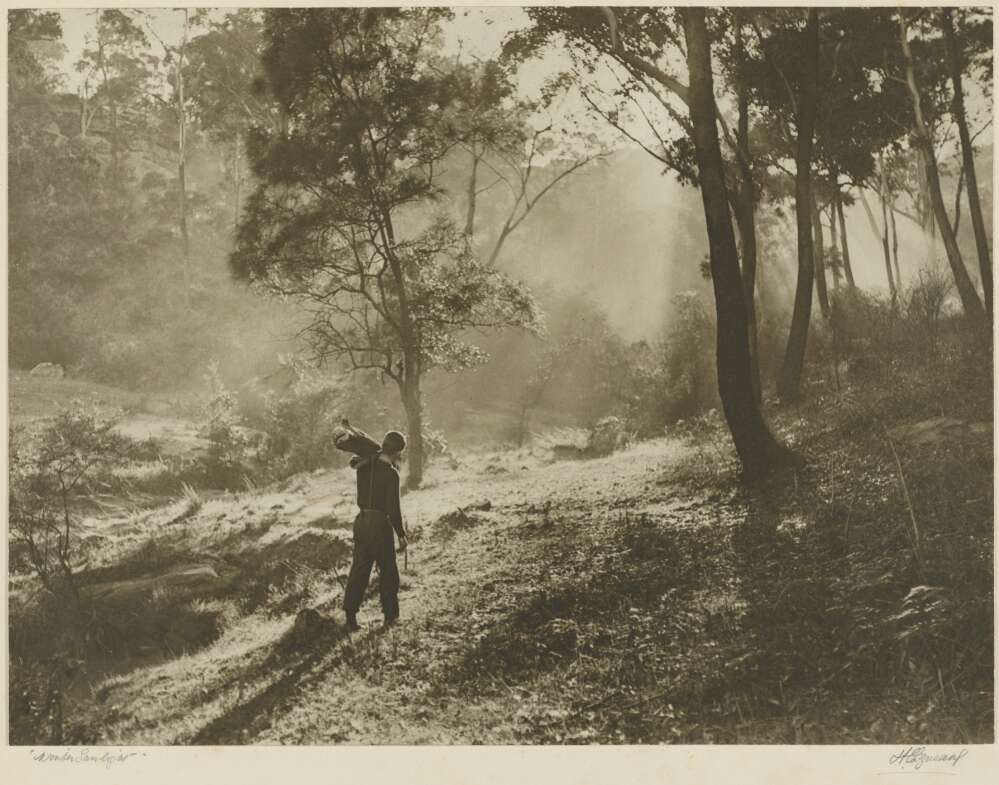
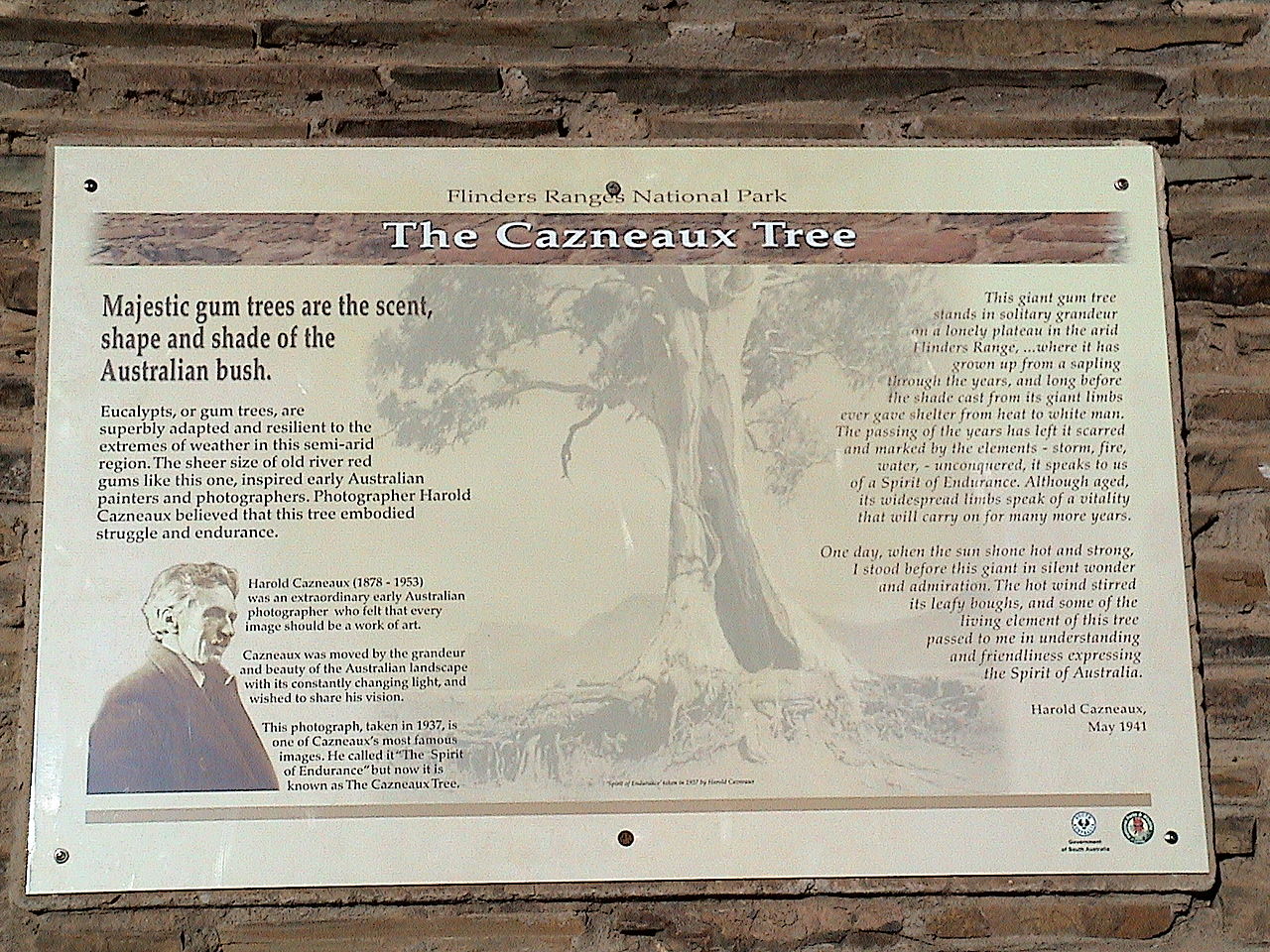
Mr. Cazneaux's photographs continued to win acclaim, here and overseas:
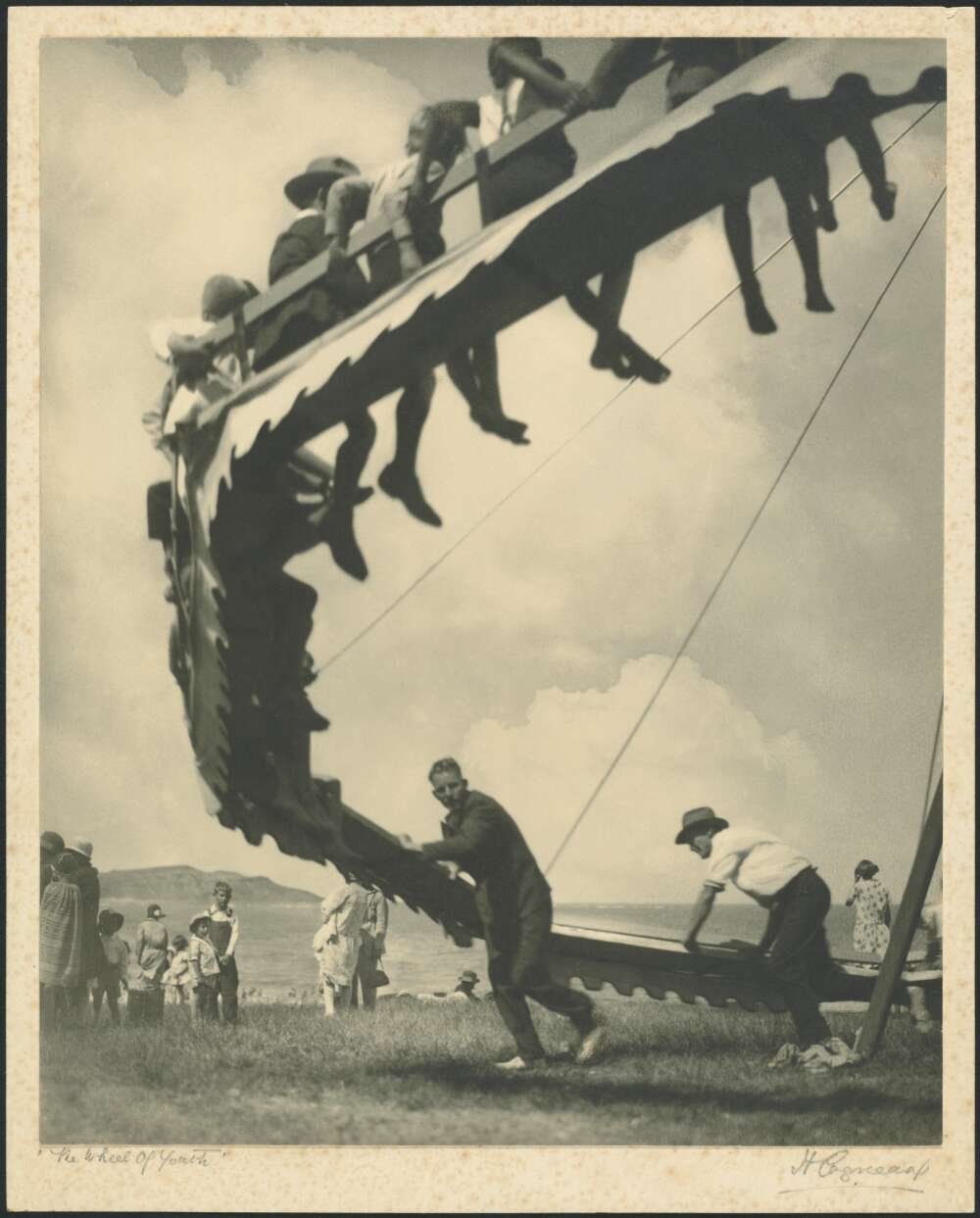
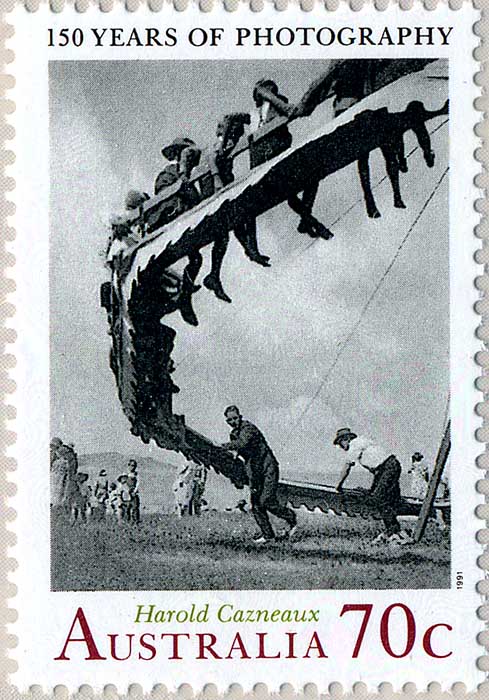
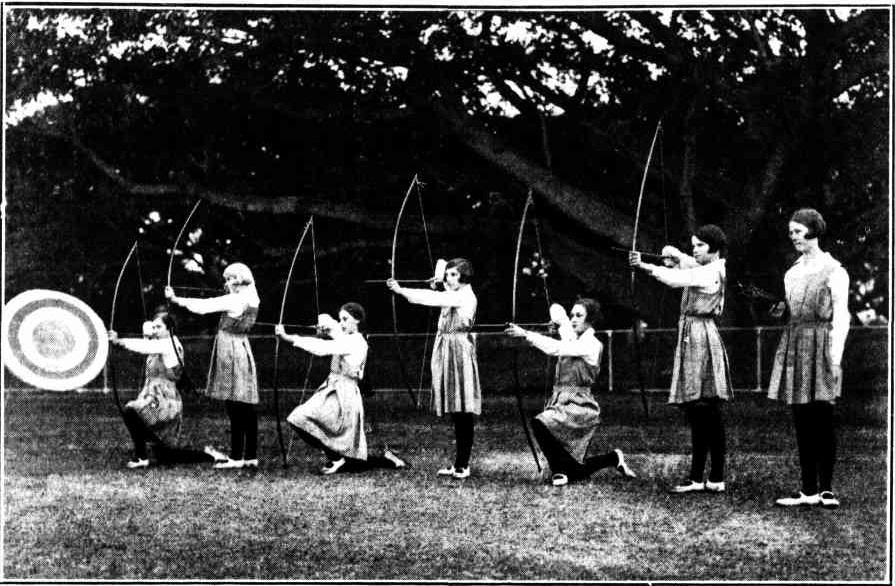
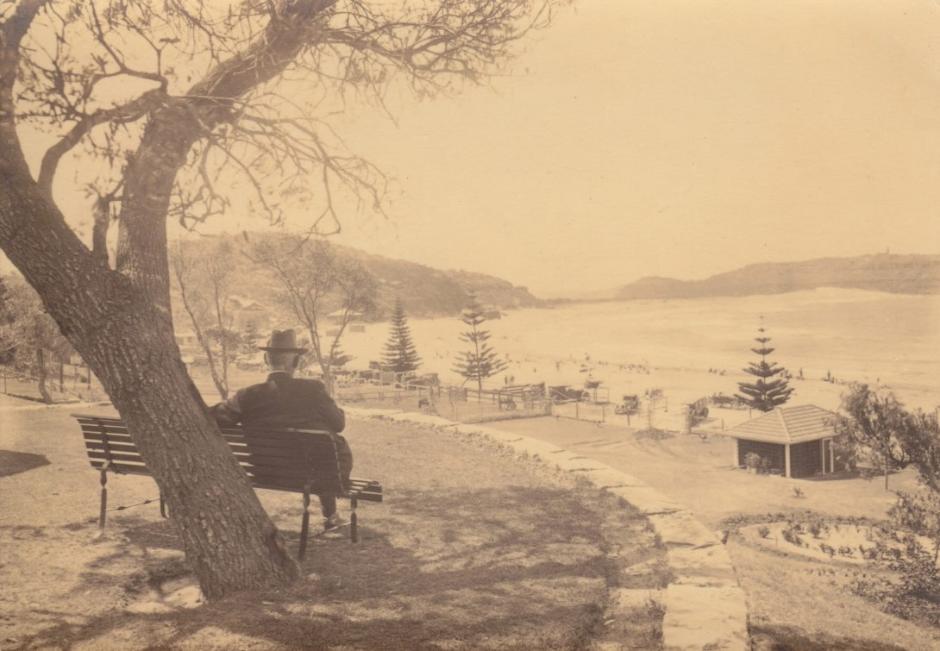
Above: Photo from South end of Palmy (circa 1925-30) courtesy Clare West - wife of Canon West (C of E) and John Cowper
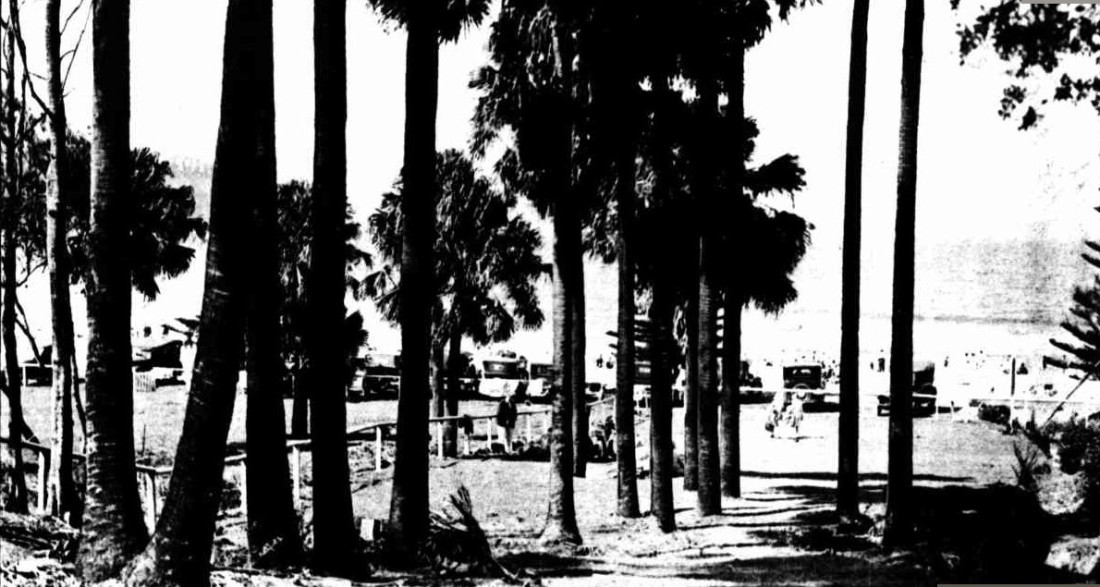
PALM BEACH, NEW SOUTH WALES. - - Among the most beautiful bathing beaches in Australia, Palm Beachis situated on a peninsula fifteen to twenty miles north of Sydney. Close by, the waters of the beautiful Hawkesbury River flow into Broken Bay. On one side of the peninsula, which is but a few hundred yards across, is the surf of the Pacific Ocean, and on the other are the calm waters of the historic Pittwater, the scene of many aquatic carnivals. At one time there were many palms in the locality, but few remain, and these are jealously preserved. photo by H. CAZNEAUX PALM BEACH, NEW SOUTH WALES. (1934, October 1). The Australasian(Melbourne, Vic. : 1864 - 1946), p. 19. Retrieved from http://nla.gov.au/nla.news-article145241972
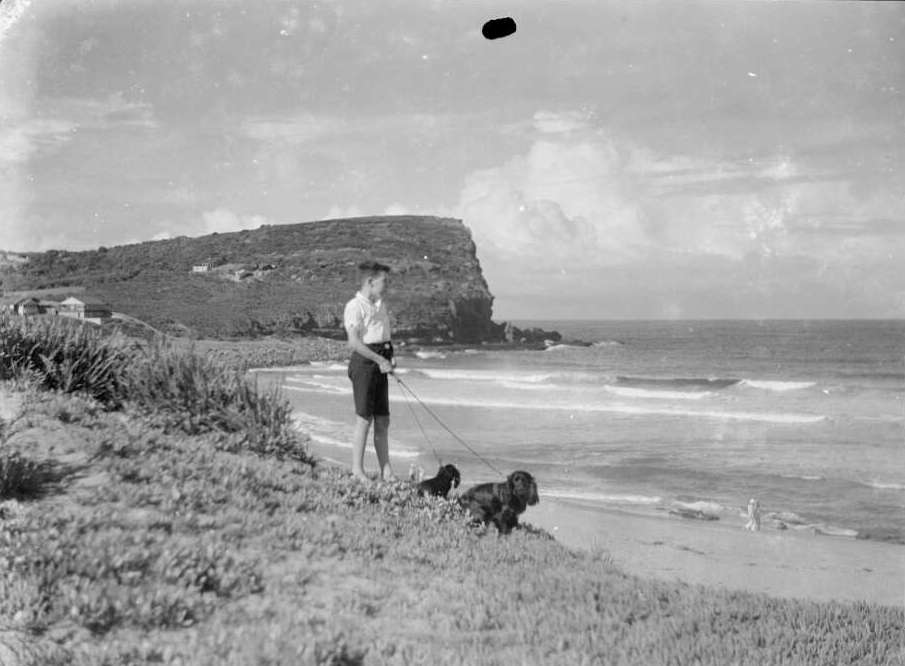
Cazneaux, Harold. (1934). Harold with his two dogs at Avalon Beach, New South Wales, circa 1934 Courtesy National Library of Australia. Retrieved from http://nla.gov.au/nla.obj-144145851 - this 'Harold' is actually Mr. Cazneau's son Harold.
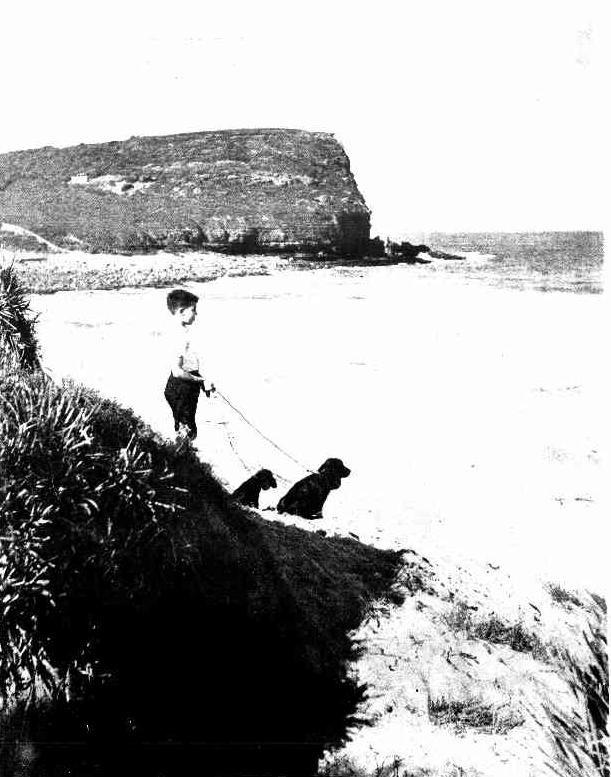
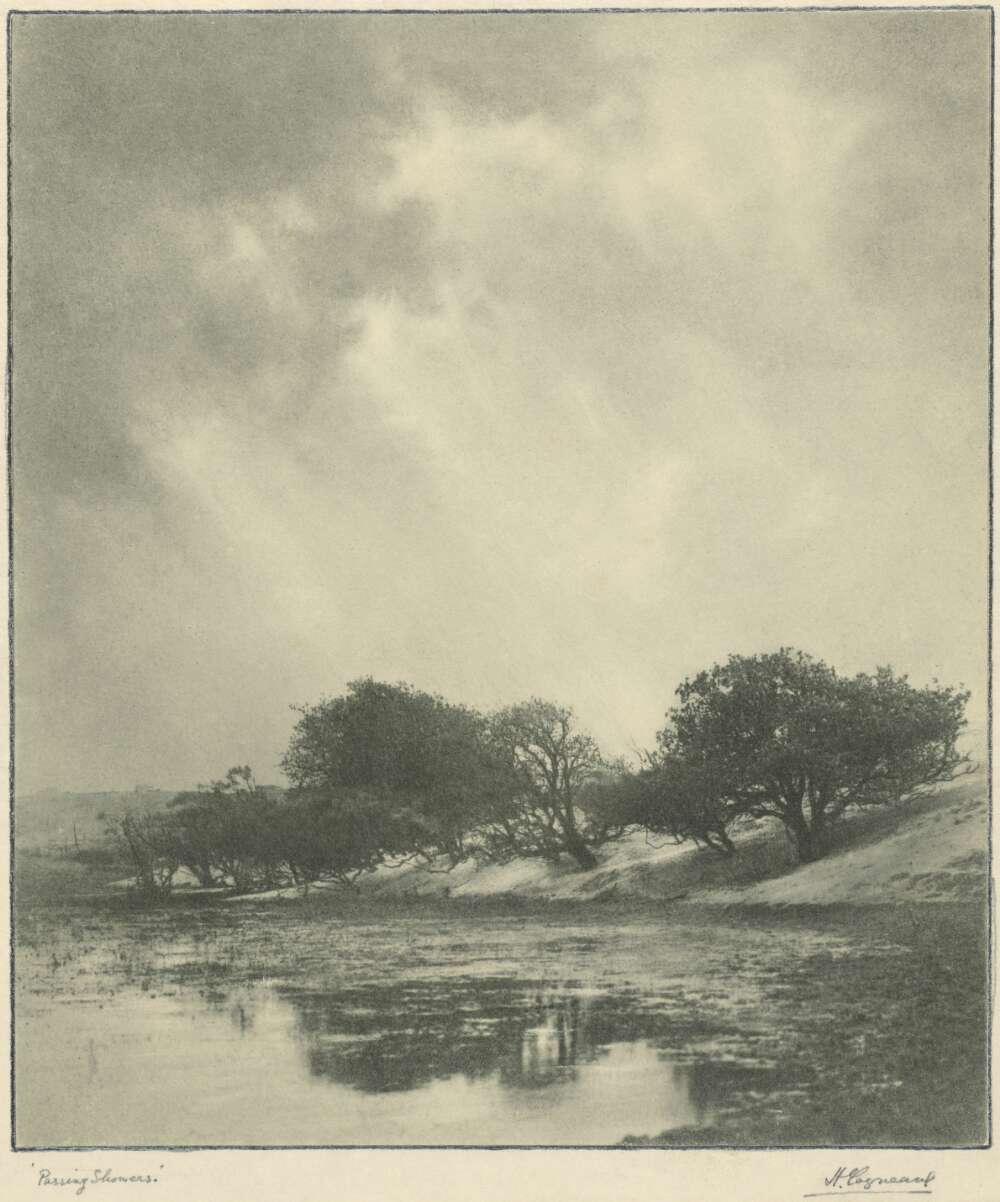
Passing showers, Mona Vale by Harold Cazneaux, circa 1935. Picture No.: nla.pic-an2384473, courtesy National Library of Australia
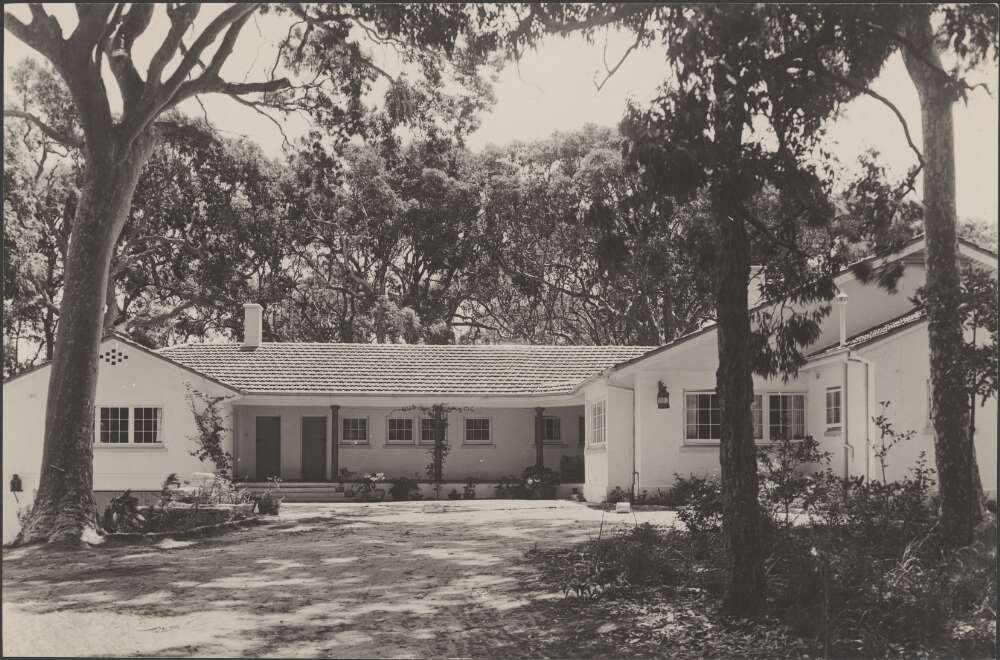
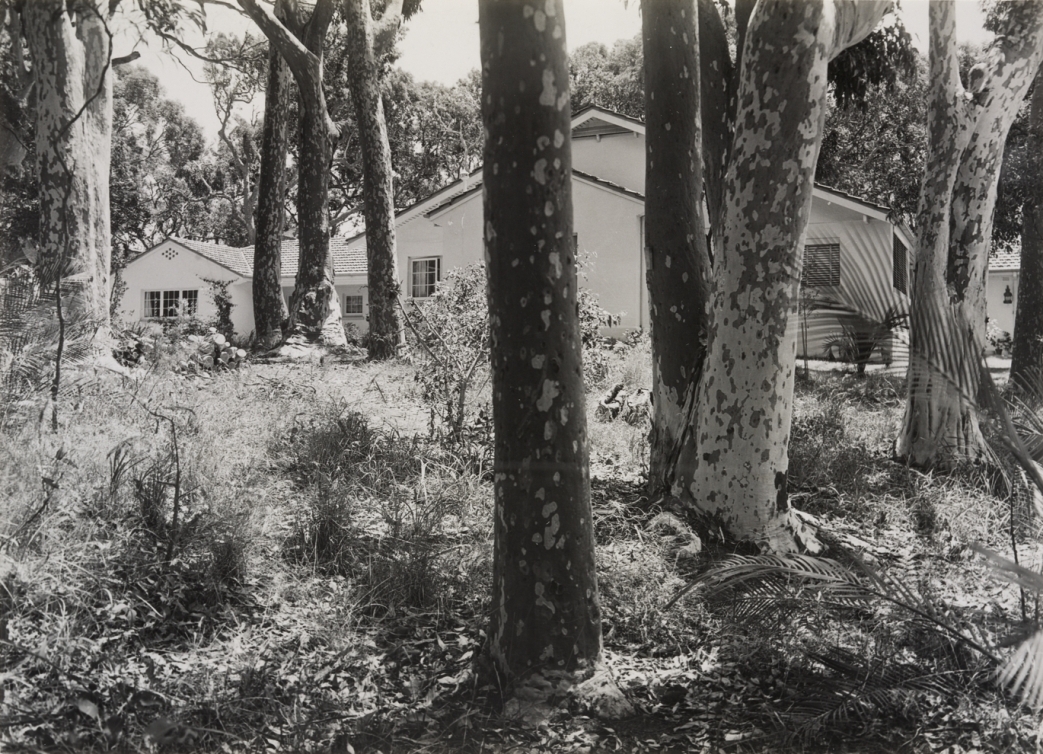
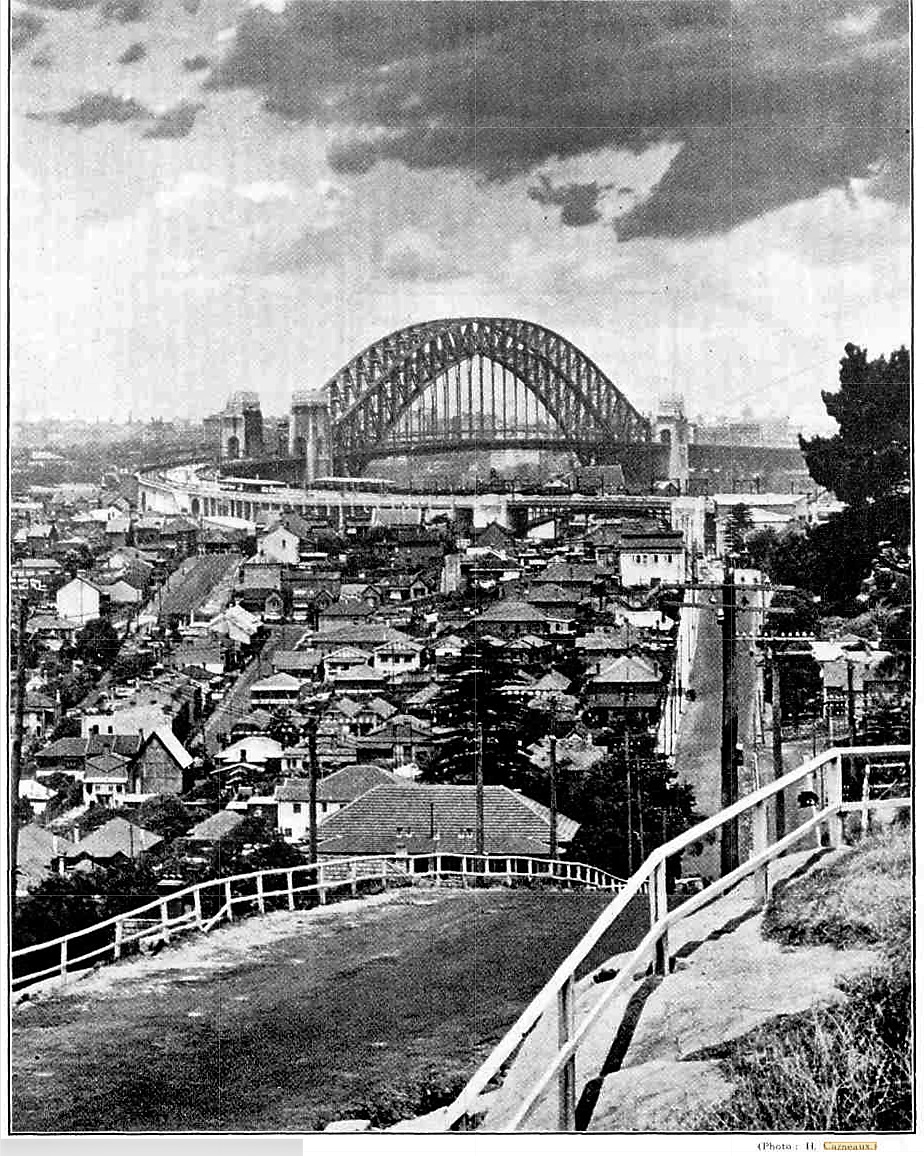
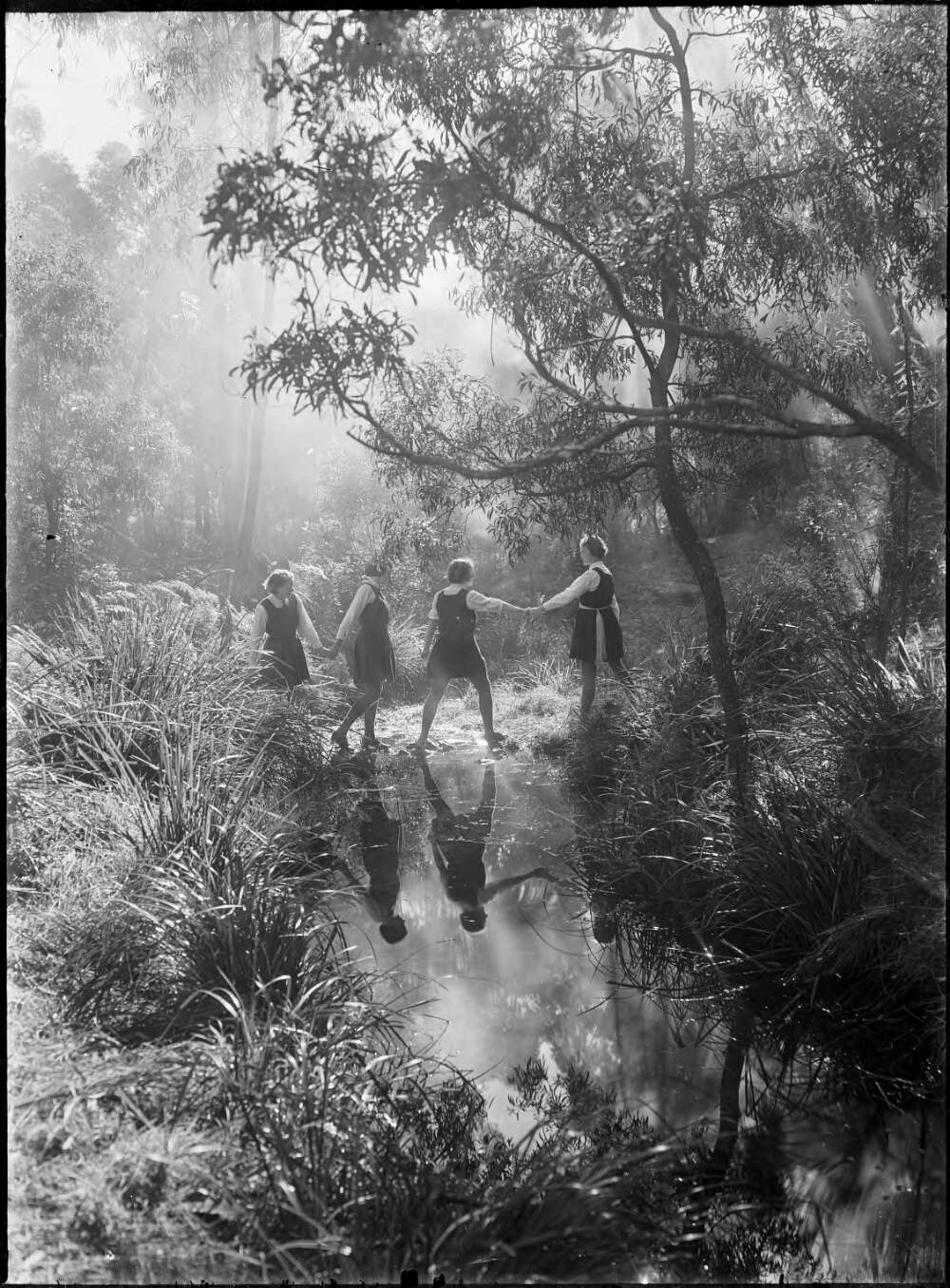
After so much said about the gentleman, some of Mr. Cazneaux's articles:
WHERE THE ARTIST FAILS
BY H. CAZNEAUX, PHOTOGRAPHER
MANY well-known artists say that, in the hands of the artistically gifted, photography is an art; but many more jump at the mere mention -of the question to a tirade of arguments so hopelessly wanton that modest Mr. Photographer slides back into the shadows of his dark-room, there to delve into the secrets of the effects of actinic light action upon silver, ultimately bringing out his essays into honest daylight.
At the exhibition, the poor photographer trembles. He notes the distinguished art connoisseur discoursing on the merits, and mostly upon the demerits, of his photographs on the wall. "Perhaps - some day", he says. "At present, all I can see is the rendering of mere record".
Looking back, the photographer's mind seizes the fact that so many artists have made use of snapshot photography. Many of them, on tour, have cameras peeping out of their pockets - perhaps their dislike of the word "art" being added to "photograph" has come with the slap knowledge with which they manipulated their cameras, and gave the films to quick - printing ma-chines, which turned out horrid, black-and-white, glossy little cheap photos. But — even these snaps were useful to the authors, in ways known to themselves.
The truth must come out. Mr. Paintquick deigned to make use of the cheap snapshot to fill in details on his canvas — and the humble photographer was modestly proud. Apart from this, had not his beloved photography supplanted the artist in journals and newspapers, just on account of the wonderful action-of-a-second of arrested, motion — the grace of the dancer, the tension of the racehorse in full gallop, the decorative effect of flying birds? These speed photographs gave the artist just the insight he needed, that frozen fraction of a second which the human eye could not hold. No more stiff, unnatural drawings!
But the photographer has gone further than this. Those of his kind with artistic instincts so far developed the subtleties of photography that to-day it is possible to make pictures with all the skill of the artist. There are still limitations: colors are not perfected, but it is only a matter of time. The world will yet see the photographer's pictures in color, and he will be artist enough to control the color rendering, just as he has studied the control of monochrome, which has given his pictures that sense of color.
INDIVIDUALITY
There is the argument that it is impossible to show individuality in camera studies. Utter non-sense. If six camera artists were given the same scene to photograph, each would show pictures that would not only be entirely different from the rest, but one could pick out each artist by his picture. Individuality? The camera artist is full of it.
What notoriously bad pictures the painter would turn out if a camera were put in his hands! Worse, perhaps, than the result if a brush were thrust into the photographer's hands.
The camera man does not need to draw. He concentrates upon the art of selection, his eye is sensitive to the pictorial quality of light and shade. His lens does the drawing. He can control the tones of his negatives, eliminating unnecessary details. He has the artistry of being capable of adding accent to high lights, greater depths to shadows - the whole range of light and shade is absolutely under his artistic control. The greater his artistic conception, the greater will be the pictorial quality of the finished photograph -which is just what can be said of the painter or etcher.
WHERE CAMERAS SCORE
What an advantage over the artist has the photographer in portraiture! It is here that the camera scores, for, with exposures of a second, and even less, the photographer can secure natural expressions and positions under a variety of different lightings, so that he does not worry even the most nervous of sitters. But how elusive the pose and expression when spread over the long sittings necessary to complete a drawing or painting. In the end, the work may show the artist off in some style of finish, such as the working of his own personality into the canvas, but it may be a bad like-ness, backed by a stiff, exaggerated pose. Perhaps everyone - except the sitter - is thrilled.
Without conceit of any kind, the photographer, in the space of 30 minutes, may secure a dozen different positions and various expressions. Some, to be sure, will be bad, but he offers at least a couple of excellent portraits, untrammelled by fanciful style or distortion, and all for a modest fee of a few guineas for a dozen copies. The painter, for all his cleverness, must charge the sitter 50 or 100 guineas for making a single bad likeness. How well has the camera served the masses in past years. Think of the magnitude of the service. Good or bad, expensive or cheap, there can scarcely be an individual who shakes off this mortal coil without leaving a distinctive, personal like-ness behind him to console friends and relatives. For rich and poor, the photographer has robbed the grave of something of its victory. Imagine a world in which there were only artists, ready to grant this shadow of immortality only to those who could pay the price - and often, what a shadow!
A study in curves. - Another Royal Photographic Society picture.
WHERE THE ARTIST FAILS (1929, November 10). The Sun (Sydney, NSW : 1910 - 1954), p. 25. Retrieved from http://nla.gov.au/nla.news-article225157833
ART OF THE CAMERA.
Its Amazing Growth.
By Harold Cazneaux.
The photographic art in Australia is comparatively young, but it has made remarkable progress, and is destined to achieve much greater distinction. Until a few years ago Australia was practically unknown in the photographic world, but to-day, at the time of our 150th Anniversary, the work of Australians is recognised in all the noted salons overseas.
The Photographic Society of New South Wales, in association with the Sydney Camera Circle and the Professional Photographers Association of New South Wales, has organized the Commemorative Salon of Photography, which is now open in the gallery of the Commonwealth Bank building. This important salon, which is officially recognised by the Anniversary Celebrations Council, includes examples of photographic art by amateur and professional workers from all over the world, and illustrates the tremendous advance which photography has made. The beauty of the pictures and the wide range of subject matter render the exhibition of unique interest to the public.
THE VELVET COAT
Photography had not been invented when Governor Phillip landed at Sydney Cove. It is a little over 100 years ago since Daguerre and Fox Talbot worked out the difficult experiments which led to the discovery of photography.
The real development of photography occurred only in our parents' day, and there are many old but well-preserved "Daguerreotypes" and even old silverprints still in existence which belonged to them. There came a change-over from the "wet plate" to the "dry plate " and the old and cumbersome process slowly gave way to the new and lighter method. Studios were opened in greater numbers in the cities, and spread to country towns. The photographer, garbed in his velvet coat and perhaps a velvet cap was a personage in those days. He worked "by appointment only," and his studio bore the appearance of "back stage" of the old-time theatre, for he had to supply the accessories for his sitters — backgrounds that would provide interiors of mansions, churches, seaside scenes, and landscapes. His stock-in-trade included fake terraces, staircases, ship's masts, boats, elaborate furniture, and huge clam shells for the baby. Some possessed stuffed birds and animals and children were often specially dressed up to fit in with the photographer's ponderous accessories.
All this passed away. The accessories and velvet coats were sold as junk, heavy cameras and huge old-fashioned lenses were bundled out of the way, and a newer era was ushered in. Young Australians got hold of newer cameras, lighter and more efficient lenses, and simpler studio equipment. Electric light appeared, and daylight was considered out of date. The photographer to-day works in a modern studio, he takes your portrait while you are chatting to him, he touches buttons and switches, and lights appear from all angles of his studio, and he uses thin sensitive films instead of heavy glass plates.
Australia is up to date in photographic matters, although it must still rely upon world centres for high-grade cameras and equipment. For many years, however, quality sensitive film, plates printing papers and much other photographic material have been manufactured in Victoria and New South Wales, and eventually we may hope to produce cameras, lenses and other delicate equipment.
Australians' Fine Work.
Australia has photographers whose work compares very favourably with that done overseas. It is being accepted and hung in the noted salons of the world, such as the annual show of the Royal Photographic Society of Great Britain and the London Salon of Photography, and many foreign salons exhibit Australian pictorial photographs, which become a splendid advertisement for this country.
The amateur photographer has been responsible for a great deal of the progress of artistic photography in Australia. His in-dependent and individual outlook has enabled him to produce pictures without thought of sales, and much of the artistic quality apparent in to-day's photography has developed from the amateur's sound and natural outlook. We have throughout Australia many amateur photographic clubs and societies who work purely for the love of advancing artistic photography. The Photographic Society of New South Wales, which is affiliated with the Royal Society, was founded over 40 years ago, and it continues its good work.
Photography is one of the world’s great hobbies and our workers have shared in the international interchange of the best examples of pictorial art.
Commercial and advertising photography, like press photography has undergone a transformation, and the old-time inartistic type of cameraman has no value to-day. The new work is exacting and only men and women of the highest artistic ability and photographic technique can hope to succeed.
Photography for the million is a great teacher it compels attention to detail, develops the powers of observation, imagination and patience, and brings out latent artistic talent. Above all, it encourages a love of our great Australian outdoors. What- ever is spent on photography as a hobby is returned to the discriminating user tenfold.
A remarkable fact about photography is that while it is capable of being employed by scientists for record and other work, the artist, using the same materials, can produce a picture which will portray a subject arranged with pleasing composition and rendered in beautiful tonal quality — a picture which can be justly looked upon as a work of art. Critics who say that photography is only a mechanical means of producing a picture know little of artistic photographic technique. A first-class photographer who possesses depth of feeling, an eye for artistic selection and a creative mind can give lasting joy to the beholder of his work and elevate photography to the realm of true art.
ART OF THE CAMERA. (1938, March 26).The Sydney Morning Herald (NSW : 1842 - 1954), p. 7. Retrieved from http://nla.gov.au/nla.news-article17452105
Harold Cazneaux remains the 'father of Australian photography' - his works captured the essence of a nation coming into its own and establishing an identity that has been reinvented a million times since. Everyone has one or several Cazneaux photographs that they love for many reasons.
Cazneaux wrote: “The photographer must be in accordance with all nature’s moods, he must feel the very spirit of the scene if he is to be successful”.
A great photographer is able to immerse themselves - knowing thereby they will capture the essence of what is there and what is happening if that is at all possible. For Harold Cazneaux it certainly was; despite a battle with depression that went on for decades, he found immersing himself in music and the beauty of Nature, whether at home in his garden, or elsewhere, was not only a curative but an inspiration to creating pure ART.
The man himself, quiet, humble but serious about his work, communicated a sense of home that sprang from being and remaining embedded in his own family and showed in thousands of visions that other great home - Australia, and for us, visions of the place we call home as it was that are imbued with love and bring joy.
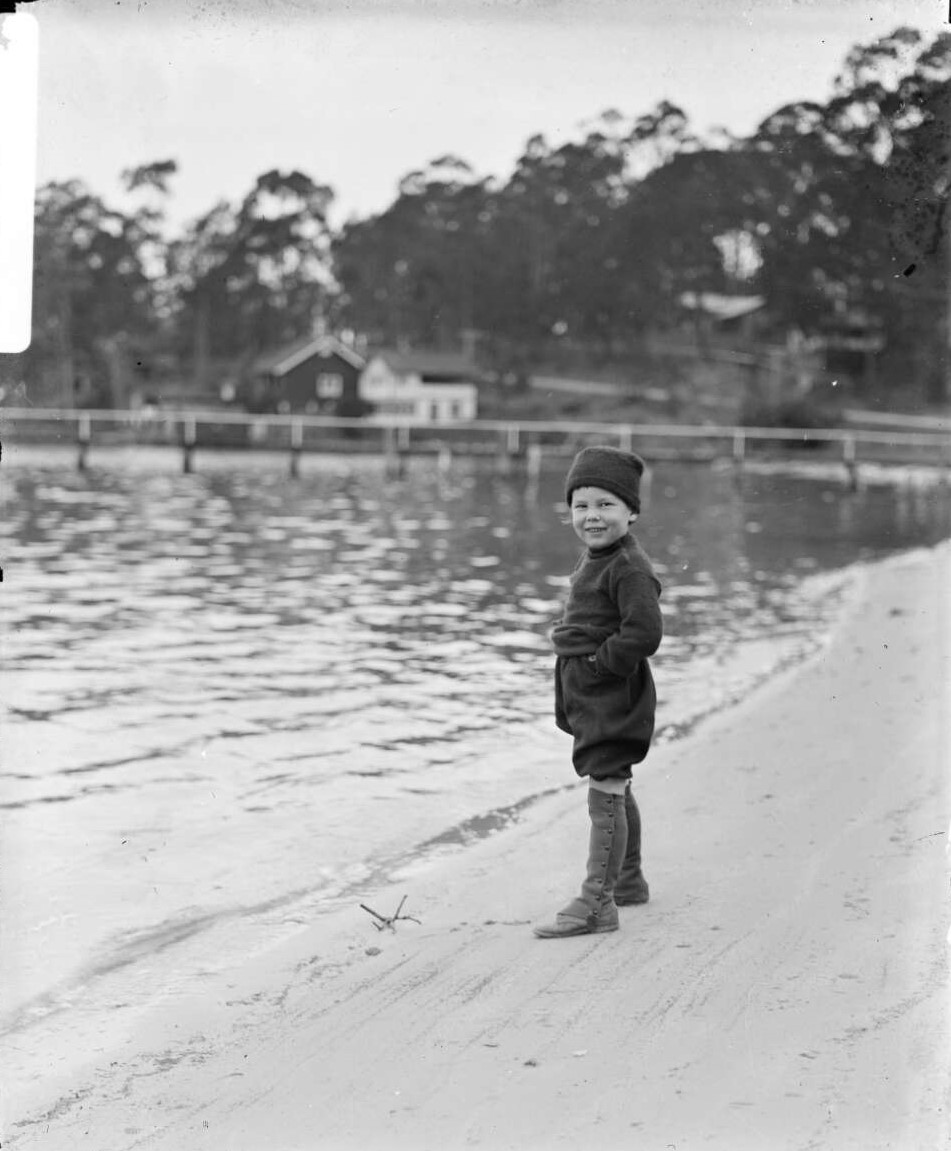
Cazneaux, Harold. (1924). Harold standing on water's edge in cap and gaiters, Sydney, 1924 Courtesy National Library of Australia Retrieved from http://nla.gov.au/nla.obj-144143944
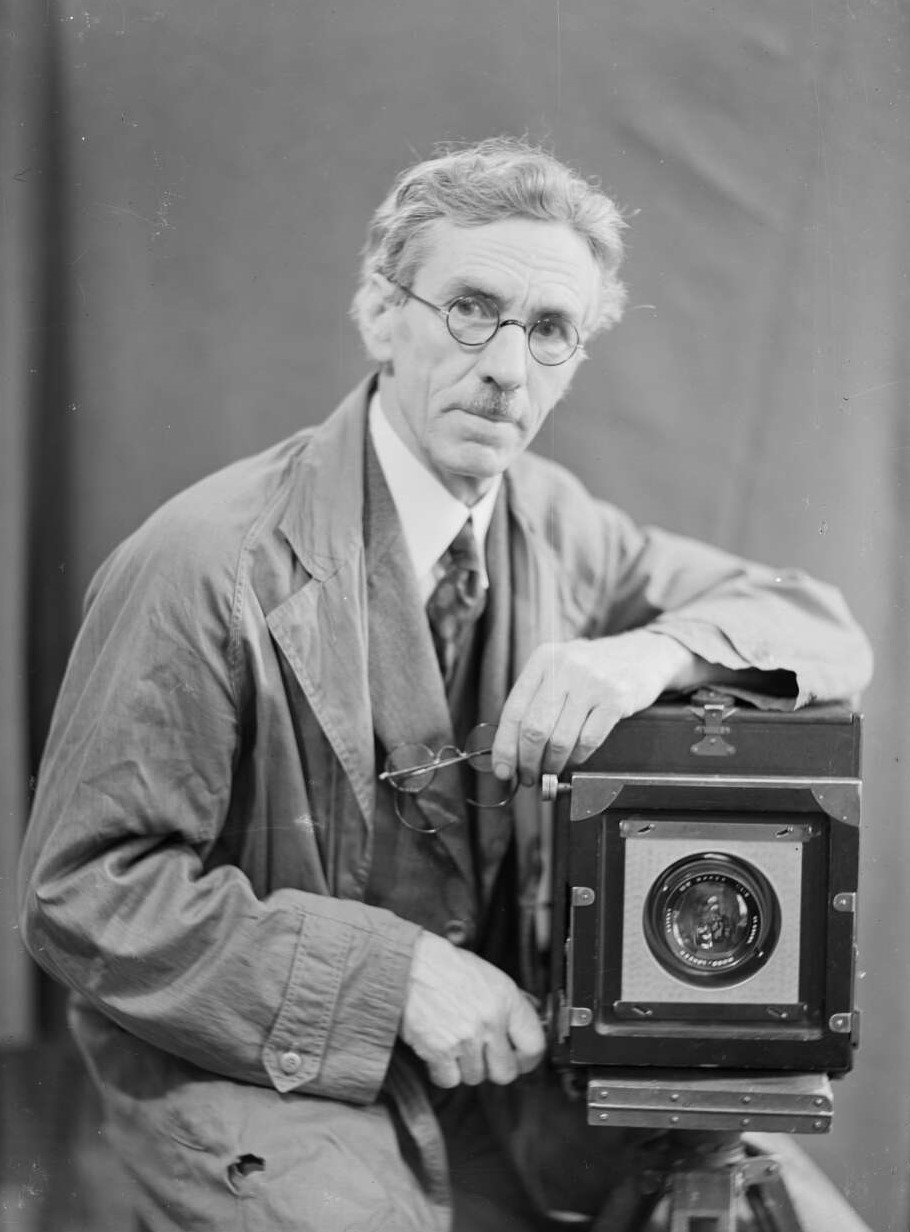
References And Extras
1. TROVE. The National Library of Australia
2.Edwards, Zeny, Ambleside, Dictionary of Sydney, 2008, http://dictionaryofsydney.org/entry/ambleside
3. Lesley G. Lynch, 'Cazneaux, Harold Pierce (1878–1953)', Australian Dictionary of Biography, National Centre of Biography, Australian National University, http://adb.anu.edu.au/biography/cazneaux-harold-pierce-5542/text9443, published first in hardcopy 1979
Winifred and Harold's Family
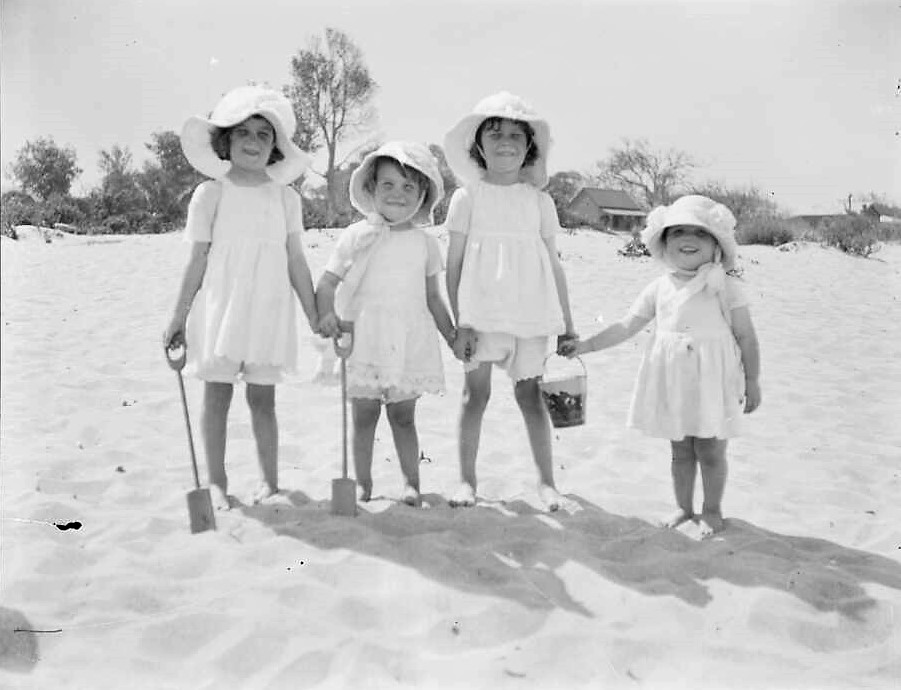
Cazneaux, Harold. (1915). Jean, Beryl, Rainbow and Carmen at the beach, North Sydney, 1915 Courtesy National Library of Australia Retrieved from http://nla.gov.au/nla.obj-144143173
Rainbow W Cazneaux born circa 1908 reg. 18662/1908 St Leonards, married Hugh Malanai Johnson, killed during WWII during sinking of HMAS Hobart RAN (parents of Robert and Sally)
Jean L Cazneaux born circa 1909, reg. 41494/1909 St Leonards
May Beryl Cazneaux born circa 1911, reg. 20775/1911 St Leonards - served in WWII
Carmen Cazneaux born circa 1913, reg. 19310/1913 St Leonards, married Vincent Frederick Field
Joan Cazneaux married Herbert Smith
Harold Ramsay Cazneaux (2nd A.I.F.) killed 14 September 1941 at Tobruk, just 21 years old
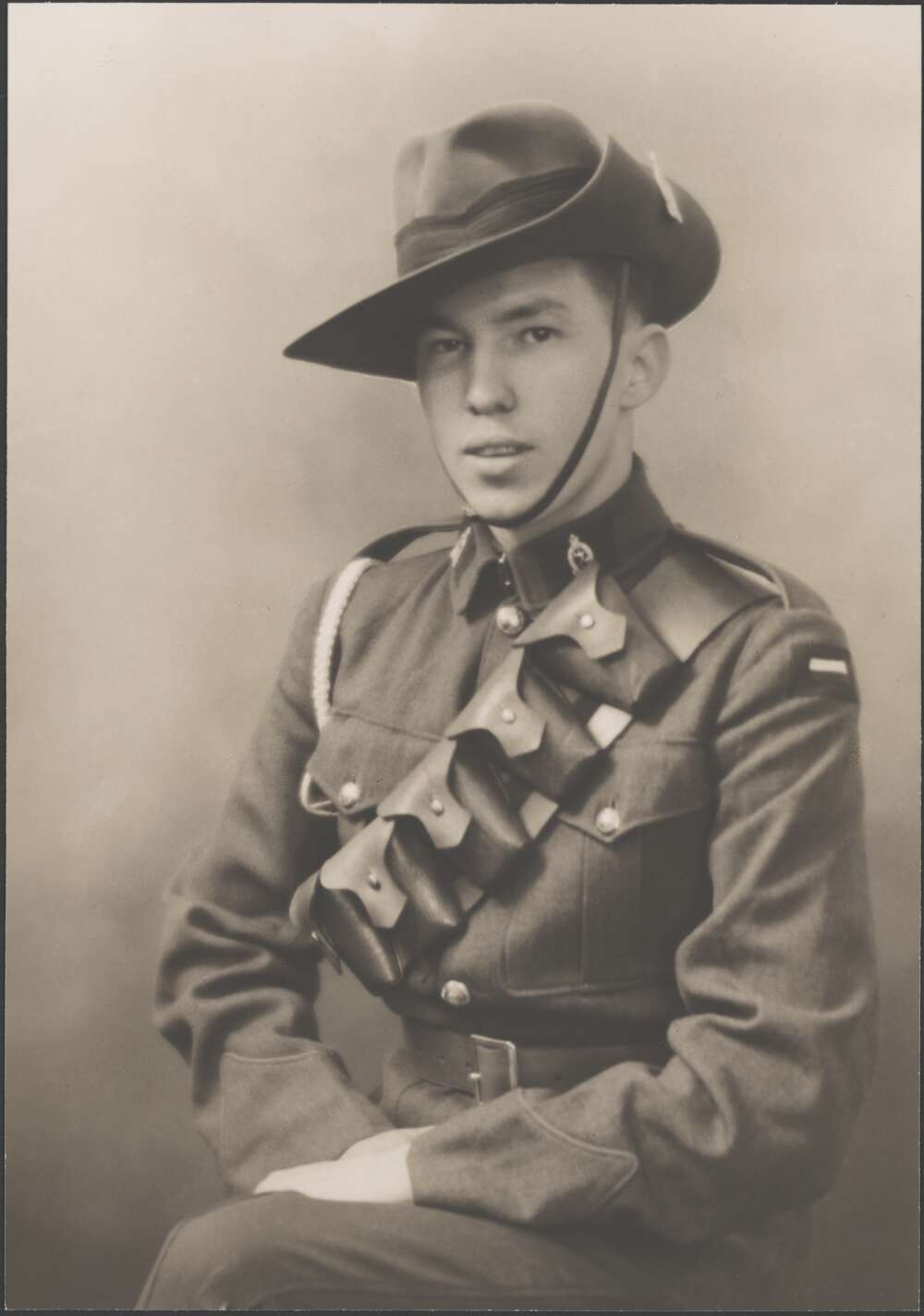
Cazneaux, Harold. (). Corporal Harold Ramsay Cazneaux in uniform, New South Wales, 1940 Courtesy National Library of Australia Retrieved from http://nla.gov.au/nla.obj-140228344
JOHNSON-CAZNEAUX-June 5 1934 at St. Andrew 's Church Roseville, by Rev. W J Roberts, Rainbow eldest daughter of Mr. and Mrs. Cazneaux Roseville to Hugh Johnson Paymaster Lieutenant RAN only son of Mr. and Mrs. M C Johnson Adelaide S A. Family Notices (1934, June 23). The Sydney Morning Herald (NSW : 1842 - 1954), p. 14. Retrieved from http://nla.gov.au/nla.news-article17095958
Studio portrait of Paymaster Lieutenant (later Paymaster Commander) Hugh Malanai Johnson - taken by Harold Cazneaux
Rainbow's husband was killed in action 20 July 1943. Paymaster Lieutenant Johnson boarded his first ship, HMAS Tingira, on 13 April 1921, and began his career with the Royal Australian Navy in the rank of Boy, 2nd Class. Having served on many ships during his career, including HMAS Melbourne, HMAS Sydney, and HMAS Cerberus, Paymaster Lieutenant Johnson joined the HMAS Hobart on 8 April 1942. Promoted to Acting Paymaster Commander on 25 May 1942 and having this position confirmed in May 1943, he lost his life just two months later when the HMAS Hobart was torpedoed by a Japanese submarine. Bio courtesy Australian War Museum.
JOHNSON -(nee Cazneaux) — On the 25th of October, at Roslyn Private Hospital, Lindfield, N.S.W., to Rainbow, wife of Paymaster Lieutenant Commander H. M. Johnson. RAN. — a daughter. Family Notices (1939, November 2). Chronicle (Adelaide, SA : 1895 - 1954), p. 23. Retrieved from http://nla.gov.au/nla.news-article92454672
The year 1941 was a horrific one for Harold and Winifred - they lost their son, Harold's brother and their son-in-law.
The birth notice for Dick Smith, electronics wizz - it should no longer be a surprise why he, alike many of us, is so very pro-Australian!:
SMITH (nee Joan Cazneaux).-March 18, at Tonga, Roseville, to L./Bdr. and Mrs. Herbert Smith, of Roseville-a son (Richard Harold). Family Notices (1944, March 22). The Sydney Morning Herald (NSW : 1842 - 1954), p. 12. Retrieved from http://nla.gov.au/nla.news-article17866094
Dick Smith grew up opposite his grandparent's home. It was his uncle Harold's radio bits and pieces that he was finally allowed to explore years after Harold's untimely death. It had been locked up and left for years prior to then.
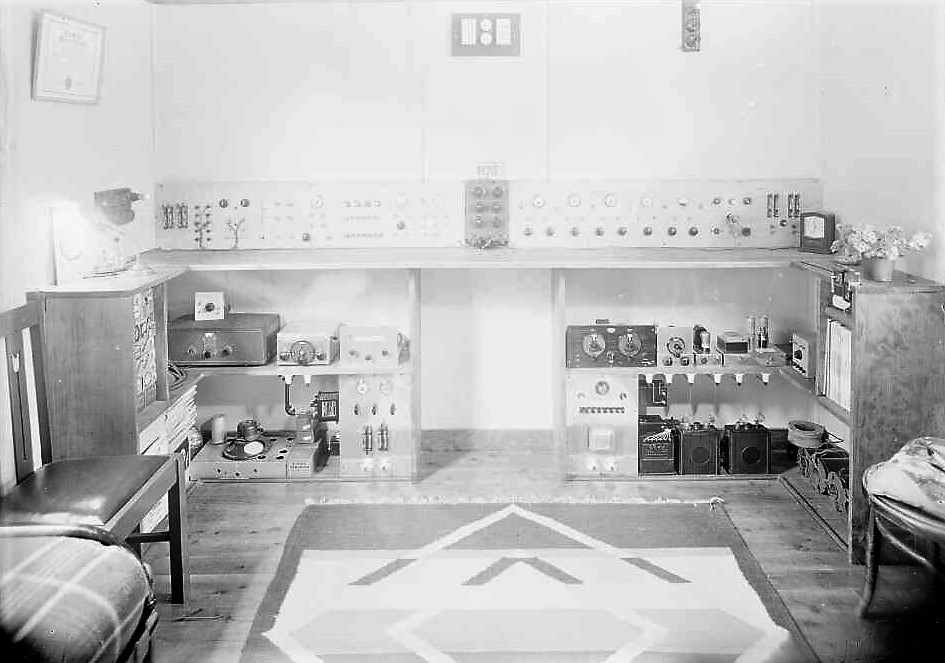
Cazneaux, Harold. (1936). Interior of Harold's room at Ambleside, Roseville, New South Wales, 1936 Courtesy National Library of Australia. Retrieved from http://nla.gov.au/nla.obj-144157615
Negative outlook in photo. art
NO Dobell influence has crept into the New South Wales Photographic Society's exhibition at Farmer's Blaxland Galleries. Most exhibitors are still painstakingly taking the same kind of photograph that their predecessors took 20 years ago. This is the view of Mr. S. Dunleavy. "Sunday Sun" photo-graphic expert, of the work in the exhibition. "The walls are covered with pre-war photo mounts with pre-last war photographs stuck to them. Mr. Dunleavy said excellent technical work in the exhibition was wasted on banal landscapes and portraits. Three of Australia's best photographers, H. Cazneaux. Dr. Julian Smith and Monte Luke, entered the best photographs, all taken many years ago. Cazneaux and Monte Luke, masters of the bromoil process, avoided the splashiness of less-skilful artists. "Old" child studies "Dr. Julian Smith's child studies are still unbeatable, though the Manpower authorities have probably caught up with most of the children by now", Mr. Dunleavy said. Mr. Dunleavy said the most original exhibitor was Ainslie Roberts, with a table-top composition. "We shot down a Junkers 89" - a picture of aerial combat. Good example of a scenic study injected with life and drama was John Street's "The Magic Wood". Other exhibitors worthy of mention were John Wray, J. Metcalf and Clarence Young.
This looks like a thrilling scene of aerial combat, but is actually a composite table-top photograph, entered by Ainslie Roberts in the NSW photographic Society's exhibition.
"Longing", by A.E.F. Chaffer, outstanding in the same exhibition.
"Drummer Boy", one of many excellent child studies by Dr. Julian Smith.
Negative outlook in photo, art (1945, January 21). The Sun (Sydney, NSW : 1910 - 1954), p. 6. Retrieved from http://nla.gov.au/nla.news-article231705728
The great man himself passes away:
CAZNEAUX, Harold Pierce.—June 19, 1953 (suddenly), at his residence, Roseville, beloved husband of Mabel Winifred and loved father of Rainbow, Jean, Beryl, Carmen and Joan and Harold. (deceased 2nd A.I.F). Family Notices (1953, June 20). The Sydney Morning Herald (NSW : 1842 - 1954), p. 40. Retrieved from http://nla.gov.au/nla.news-article18366746
TO HONOUR NOTED CAMERAMAN
A tribute which members of the Northern Tasmanian Camera Club had arranged to pay well-known Australian photographer, Mr. Harold Cazneaux, will now hold a much deeper significance for them. OFFICIALS of the club were notified yesterday that Mr. Cazneaux died in Sydney early yesterday morning. Mr. Cazneaux, who was an Honorary Fellow of the Royal Photographic Society, had been prominent in Australian photographic circles for more than 50 years. Last year photographic societies in Sydney combined to pay a tribute to Mr. Cazneaux at a function at which 50 of his best works were displayed. Recorded Tape recordings and a film of the pictures display-ed, with comments by Mr. Cazneaux, were made and distributed to photographic societies all over Australia. Arrangements had been made to have this tribute in Launceston next Tues-day, and officials of the N.T.C.C. decided yesterday that they would hold the function as planned. Members of other clubs in the North and North-West have been invited to at-tend the function, which will be held at the club's rooms at the Queen Victoria Museum. TO HONOUR NOTED CAMERAMAN (1953, June 25). Examiner (Launceston, Tas. : 1900 - 1954), p. 6. Retrieved from http://nla.gov.au/nla.news-article225918986
TRIBUTE CAME TOO LATE
AFTER the Northern Tasmanian Camera Club had arranged to pay a tribute to the well known Australian photo-grapher Mr. Harold Caz-neaux, news was received last week of his death in Sydney.
The function, however, was held last night at the Queen Victoria Museum, Launceston, but before it opened the club president (Mr. J. Ikin) referred to Mr. Cazneaux's death, and the gathering stood in silence out of respect to his memory.
Mr. Cazneaux, who was an honorary fellow of the Royal Photographic Society, had been prominent in Australian photographic circles for more than 50 years. TRIBUTE CAME TOO LATE (1953, July 1). The Mercury (Hobart, Tas. : 1860 - 1954), p. 18. Retrieved from http://nla.gov.au/nla.news-article27148768
WIDOW CANT GET HER MONEY, BUT …
Gaoled Woman Has Her Respect
Miss Joan Hamilton who went to gaol last Tuesday for contempt of Court as a strong admirer in Mrs. Mabel Winifred Cazneaux, the parson most affected by the stand that sent her there.
"I respect Miss Hamilton's courage. I admire her principles," said gentle, grey-haired little Mrs. Cazneaux yesterday.
Miss Hamilton, of Carlton St, Waverley, was sent to Long Bay Gaol for refusing to identify in the Probate Court a signature on a will as her own. '
The will is that of Mr. Harold Cazneaux, who died on June 19 last year, aged 75, and his widow had applied to the Court for proof of the will.
Miss Hamilton's refusal to attest has held up probate for almost a year, and Mrs. Cazneaux, the principal beneficiary, has been deprived of her income for that time.
Miss Hamilton told the Court she would not identify her signature until the pro-bate rule that solictiors and doctors receive £1/1/ for attesting a will, while other people receive nothing, was changed.
Mrs. Cazneaux said yesterday, "It has been hard. I haven't been able to buy any clothes, but I've managed.
"It has upset me terribly that Miss Hamilton has had to go to gaol.
"Sometimes I wish I had been able to talk to Miss Hamilton and get to know her better. Maybe it. would all have been different.
Only Met Once
'But I only met her once -at the solicitor's office where she worked, when she witnessed my husband's will-and that was in 1937."
Mrs. Cazneaux was gardening at her Roseville home when the "Sun-Herald" re-porter called to see her.
"Gardening steadies me when I'm upset," she said, and went on quietly:
"Perhaps this whole business wouldn't have troubled me so much if it hadn't come so soon after the first anniversary of my husband's death.
"All his friends were so kind to me then.
"Even the Prime Minister, Mr. Menzies, took the trouble to write.
"I believe Miss Hamilton will come before the Court to-morrow when the case is resumed. If she has a second chance I hope she will change her mind."
An official of St. Vincent's Hospital said yesterday that an operation which was to have been performed on Miss Hamilton this morning had been cancelled. WIDOW CAN'T GET HER MONEY, BUT... Gaoled Woman Has Her Respect (1954, August 8). The Sun-Herald (Sydney, NSW : 1953 - 1954), p. 9. Retrieved from http://nla.gov.au/nla.news-article28663768
Marriage
Ethel Turner : At Her Window
(By M. Cox-Taylor)
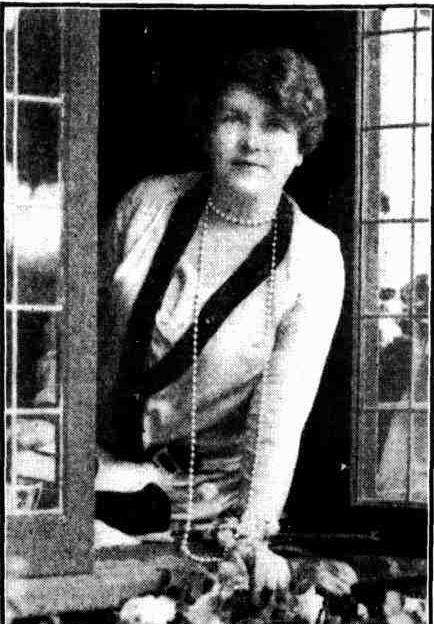
Leon Gellert Finds Himself.. AMONG THE KOALAS
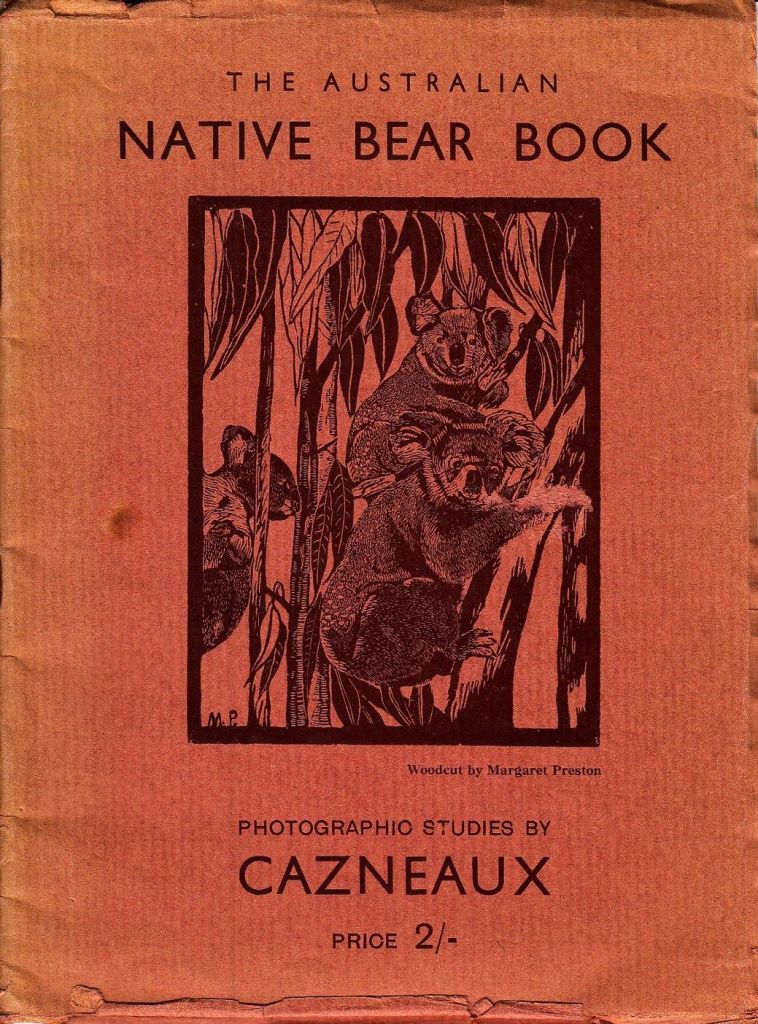 AN incensed reader has sent me a newspaper clipping in which, she claims, a libellous injustice has been done to a koala. It states that at Mona Vale one of these animals bit and poisoned the hand of a solicitous naturalist who was trying to succour it-a Mr. John Hallstrom. The name seems familiar. Were there any truth in this alarming story it could only be assumed that the unhappy marsupial, immeasurably wiser than its kind, singled out that particular hand as most deserving the honour of the first koala-bite in history.
AN incensed reader has sent me a newspaper clipping in which, she claims, a libellous injustice has been done to a koala. It states that at Mona Vale one of these animals bit and poisoned the hand of a solicitous naturalist who was trying to succour it-a Mr. John Hallstrom. The name seems familiar. Were there any truth in this alarming story it could only be assumed that the unhappy marsupial, immeasurably wiser than its kind, singled out that particular hand as most deserving the honour of the first koala-bite in history.
Such reckless stories of the ferocity of our native bears may have their uses. Apart from frightening us into barring our doors more securely at night, they should act as a warning to those foolhardy wayfarers who are always eager to rescue a country's fauna from its natural surroundings.
Man, in his dealings with creatures of the wild, suffers many misadventures. He may be torn asunder by raging silkworms, brutally battered to death by butterflies or trampled underfoot by stampeding ladybirds, but he is never, never, never bitten by koalas.
This is not to say that every-body who chooses to play fast and loose with a koala comes away unscathed.. The single occasion on which I engaged one of the species single-handed proved to be a pretty bloody affair.
MANY years ago my friend Harold Cazneaux (the celebrated photographer) and I were assigned to bring out an illustrated booklet on the Australian native bear. During the preliminary operations of getting facts and photographs at Koala Park, Mr. Noel Burner, the director of the sanctuary, placed an exquisite cub of about seven inches long in my arms while he and Cazneaux went in search of a larger specimen.
Mistaking me for the bole of a stunted bluegum, the animal began to mount, hand over hand,[for the topmost branches where, if instinct could be relied upon, the most succulent pastures were to be found. I tried as gently as possible to thwart its purpose, but my tender restraint was met with a cheerful but desperate opposition. The harder I tugged, the deeper its needle-sharp claws dug in.
.jpg?timestamp=1471781871586) Having negotiated my vest, it scrambled from one chin to the next and began its ascent of the face, itself, where the yielding, penetrable tissues were more to its liking. Eventually it gained the summit and, as far as I remember,- settled down among the sparse undergrowth and quietly dropped off to sleep.
Having negotiated my vest, it scrambled from one chin to the next and began its ascent of the face, itself, where the yielding, penetrable tissues were more to its liking. Eventually it gained the summit and, as far as I remember,- settled down among the sparse undergrowth and quietly dropped off to sleep.
By the time Mr. Burnet returned my countenance was ashambles. But, there and then, I was given a lesson in the correct method of disengaging a koala bear from the human face. The procedure is much like removing a cluster of fishhooks that have become embedded in the flesh. The booklet is long since out of print and Mr. Cazneaux's incomparable photographs have circulated on their own merits and have been acclaimed in every quarter of the globe.
THE publication I speak of was an inexpensive little thing, and I can recall only one other incident in connection with it, and that was a true story that my friend Hemsley told me while it was in preparation.
Hemsley is one of those kindly, sensitive mortals who shudder visibly at the very thought of pain wantonly inflicted.
One evening, as we were travelling together on the ferry-boat from the city, I told him of our prospective brochure on the koala, and saw him wince at the mention of the name. After some moments of grave silence he came out with his story. It was simple and brief.
"It was towards the end of my knicker bocker days," said Hemsley. "There were three of us all boys of about the same age and armed with pea-rifles, we had set out across country one morning for a day's rabbit-shooting.
"We had tramped through the fields and low-lying paddocks for hours. We had scattered through the stubble and peered into burrows. We had combed the bushes and the dead wood for miles around but with no sight of a rabbit, except, here and there, a vanishing tail.
.jpg?timestamp=1471781937205) "By midday not a shot had been fired. And then someone suggested that we make our way up the gentle slope of ground to the foothills where, out of reach of the sun, under the tall timber we could eat our lunch.
"By midday not a shot had been fired. And then someone suggested that we make our way up the gentle slope of ground to the foothills where, out of reach of the sun, under the tall timber we could eat our lunch.
"AS soon as we got well into the belt of towering gums we collapsed forlorn and frustrated at the foot of the largest of then and lay there on our back munching and grumbling.
"Revived by our meal, we gathered enough energy to make a target of a young sapling. But we soon wearied of sapling shooting and once more lay on our backs in the shade looking up at the blue fragments of sky showing through the distant wickerwork of leaves. It was close timber and the lowest branches emerged from their trunks some twenty feet from the ground.
"Suddenly the idling eyes one of us descried a small brown shape huddled in the delicate fork of the highest limb of our tree. It swayed in the mild wind overhead like a tiny mariner caught in the farthest rigging. And although none of us had seen one we all knew that it was a koala.
"There was great excitement. Game at last!-and nicely silhouetted against a clear heaven.
"After the usual dispute as to whose privilege it was to have the first shot we were all at it firm singly, at first, and then in volleys
"The brown shape continued to swing unconcernedly and then someone scored a hit.
"There were yells of delight as our marksmanship improved and we could hear our bullets find their mark.
"Slowly the small brown bundle began to stir, unfolding itself like a woollen glove. And then we saw a drop of blood among the dead leaves at our feet. Another drop fell beside it and another. It wouldn't be long now, we thought, before that clump of fur came tumbling down. It must be fairly riddled with lead by this time.
"Nevertheless a feeling of un-easiness had set in. From away up in the tree-top there came drifting down to us a sound that made us lower our rifles and stand close together-a white faced little group, paralysed with awe. It began as a soft whimpering such as might have come from a forsaken child and swelled to the terrible grief-stricken lamentation of a heart hopelessly broken. It went on and on.
THERE was no protest in that piteous crying-only an inconsolable anguish. And as the moaning continued we noticed that the bear had begun to move.
"It was coming down-not falling down, but slowly, falteringly groping its way along the branch to the main stem, weeping and shaking its head from side to side as it paused, every now and again, to steady itself.
"Eventually it arrived at the lowest limb and commenced its backward descent of the smooth trunk. Never was progress so slow.
"And all the time we stood there watching and listening watching its poor feet fumble for a grip so that pieces of bark came clattering down-listening to that interminable crying of despair.
"When at last it reached the ground, it hesitated for a second or two and then, as though it had lost the power to see, it came stumbling to where we stood petrified with shame and horror. And there it sank at our feet.
"Not till we had realised that it was dead did we notice, clinging to its back, another diminutive bear looking up at us with bright beady eyes. It seemed as though that heroic mother had, with its last gasp, trustingly committed her cub into our care.
"I tell you that during the whole of that horrible journey home none of us spoke a single word. And since that day I have never touched a firearm of any kind."
COULD see that Hemsley was considerably upset. But it was time for me to leave him. The boat was drawing into my wharf.
As I rose to go I said, "And what became of the . . ."
But somehow I could not get the words out of my mouth. With a dumb gesture of understanding I left him sitting there.
Leon Gellert Finds Himself.. (1950, October 15). The Sunday Herald (Sydney, NSW : 1949 - 1953), , p. 2. Retrieved from http://nla.gov.au/nla.news-article28670685 Visit: Sir Edward John Lees Hallstrom - The sanctuary referred to in this article, where Harold's photos were taken, was in Castle Hill road, Pennnat Hills.
One corner is devoted to mementoes of Pavlova's two Australian visits during world tours in 1926 and 1929: an inscribed ribbon from a bouquet presented by the Russian Club of Sydney, theatre programs and photographs, two of which were taken by Cazneaux ("he was so nervous meeting her that he took a picture of the stool she would sit on and forgot to change the plate, so I had to retouch that one"). A MEMORIAL TO ANNA PAVLOVA (1974, December 18). The Australian Women's Weekly (1933 - 1982), p. 49. Retrieved from http://nla.gov.au/nla.news-article52270460
ARTS, PHOTOGRAPHY
Art Gallery of NSW: … Photography: On during the school holidays is an exhibition of photographs by Harold Cazneaux, one of Australia's most important early photographers, and the Power Gallery Acquisitions, which will show the painting, sculpture and printing purchased internationally for the Power Foundation Gallery at the University of Sydney. HOW TO ENJOY THE SCHOOL HOLIDAYS WITHOUT GOING INSANE (1975, July 30). The Australian Women's Weekly (1933 - 1982), p. 7. Retrieved from http://nla.gov.au/nla.news-article47122135
WORKS OF PIONEER PHOTOGRAPHER ON SHOW
An exhibition of photographs by the man who staged Australia's first one-man photographic show in 1909 has opened at the National Library. The pioneer photographer, Harold Cazneaux, Cazneaux, known to the camera world as Caz. was born in New Zealand but moved to Australia in the early 1890s.
The 1909 one-man show was shown in London in 1911 and critics ranked Cazneaux with "the few outstanding workers of the world in pictorial photography".
There were 75 pictures in the 1909 show, including one of his most famous studies 'The Razzle Dazzle".
'The Razzle Dazzle' is among the 60 photographs in the exhibition at the National Library. Cazneaux died in 1953. The photographs on display were selected from a collection of his pictures given to the library by his daughter, Mrs R. Johnson, of Sydney, on behalf of the family. The exhibition will continue until the end of December. LIFE STYLE PEOPLE Early photos at library 60 WORKS OF PIONEER PHOTOGRAPHER ON SHOW (1976, November 18). The Canberra Times (ACT : 1926 - 1995), p. 20. Retrieved from http://nla.gov.au/nla.news-article131796654
